Adobe Photoshop has been the go-to software for image editing for over thirty years. In early 2023, Adobe released the next big thing in image editing – Photoshop AI generative fill. Using Photoshop’s latest version, you can add or delete elements, extend the width or height of an image, and remove backgrounds, to name a few things. This post will explain Photoshop AI’s generative fill, what you can do with it, and some tips on using it effectively.
Let’s dive in.
- 1 What is Photoshop AI Generative Fill?
- 2 How to Download Photoshop
- 3 Navigating the Photoshop AI Generative Fill Taskbar
- 4 How to Use Photoshop AI Generative Fill
- 5 Photoshop AI Generative Fill Tips
- 6 Before and After Examples Using Photoshop AI
- 7 Photoshop AI Image Usage Rights
- 8 Final Thoughts on Photoshop AI Generative Fill
- 9 Frequently Asked Questions (FAQs)
What is Photoshop AI Generative Fill?
Photoshop’s AI generative fill is a powerful feature that enables you to effortlessly fill, edit, and remove image elements with just a few clicks. Powered by machine learning AI, it generates parts of images or even entire composite photos in a fraction of the time it would take if a human were to do it. Photoshop analyzes each pixel of an image and matches the lighting, perspective, coloring, and shadows, resulting in a remarkably realistic piece of art. This non-destructive tool allows you to revert easily any changes you aren’t happy with, as it organizes every generated element into its own layer, complete with a layer mask. As a result, you can enhance and modify the designs you create using any of Photoshop’s other tools, such as blending modes or filter effects. Even better, it also works with your favorite Photoshop keyboard shortcuts.
Subscribe To Our Youtube Channel
Why You Should Use Photoshop’s Generative Fill
First and foremost, because it saves time. In the past, adding or removing elements in images was time-consuming. You’d often have to use the clone tool to match surrounding pixels and take steps to add the right lighting and drop shadows, among other things. With the introduction of generative fill, Adobe takes all the necessary steps to ensure the element you’re adding or removing results in a flawless photo every time. It adds and creates appropriate shadows, reflections, lighting, and perspective, reducing the need for time-intensive manual editing.
Another reason that generative fill is so exciting is that it can replace your expensive stock photography subscriptions. We were somewhat underwhelmed when Adobe rolled out its AI features in the first Photoshop beta. However, since its formal release to the world in September 2023, it’s obvious that they have made incredible improvements. The generative feature has gotten so good that it’s difficult to tell the difference between generated and stock images.
What are some Photoshop AI Generative Fill Use Cases?
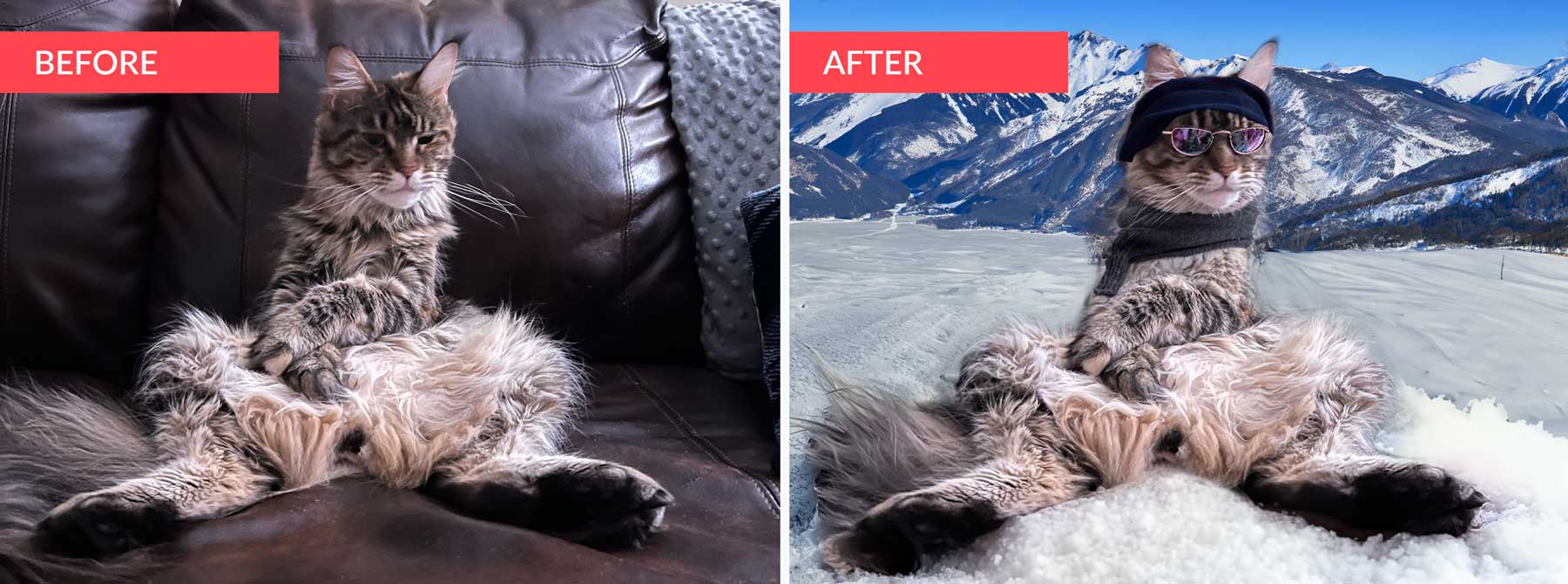
Photoshop’s generative fill is an excellent feature for several reasons, including:
- Springboard for Creativity: It allows users to quickly realize their creative vision by adding, removing, or expanding content in images with a text prompt.
- Complex editing: Generative fill is great for refining, retouching, and reworking images. For example, you can take an ordinary picture of your cat and turn it into something outrageous.
- Remove unwanted elements: Generative fill allows users to cut out unwanted elements from images with ease, such as removing objects from a photo.
- Creating images from scratch: You can also use generative fill to create backgrounds, realistic objects, or even complete images from scratch.
How to Download Photoshop
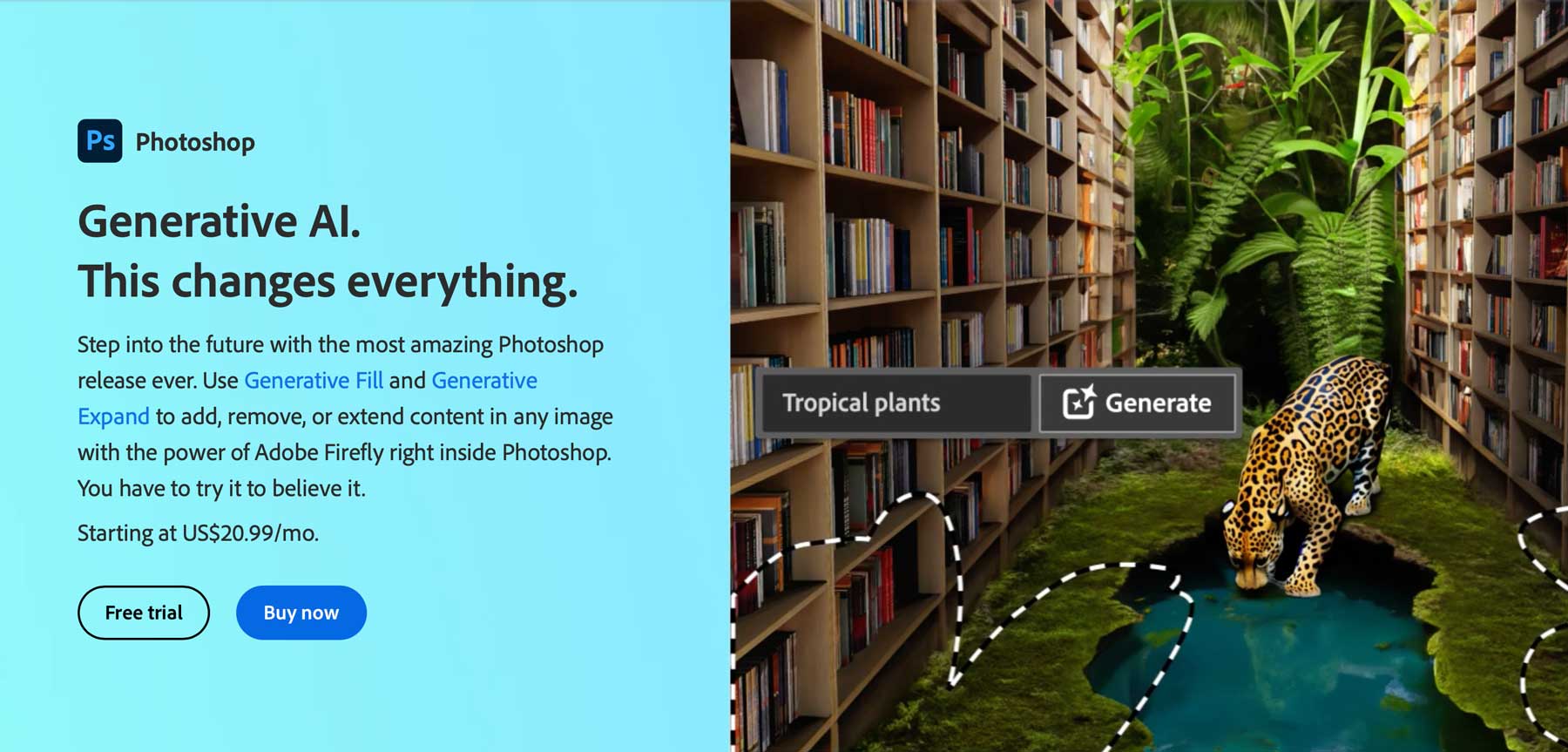
You must subscribe to Adobe’s Creative Cloud platform to use Photoshop AI generative fill unless you want to experiment with it on Adobe’s Firefly web app. The cost varies depending on your desired tools, but you can get Photoshop as a standalone product for around $21 a month. Suppose you want to test out the features of Photoshop before purchasing. In that case, they offer a 7-day free trial, so you can decide if you’d like to continue using it.
Once you sign up, click the download button to get Photoshop. Doing so will install the Creative Suite control panel on your computer. Open the Creative Cloud dashboard, then navigate to the Apps tab. From there, search for Photoshop in the Available in your plan section of the dashboard. Click on it to install the application.
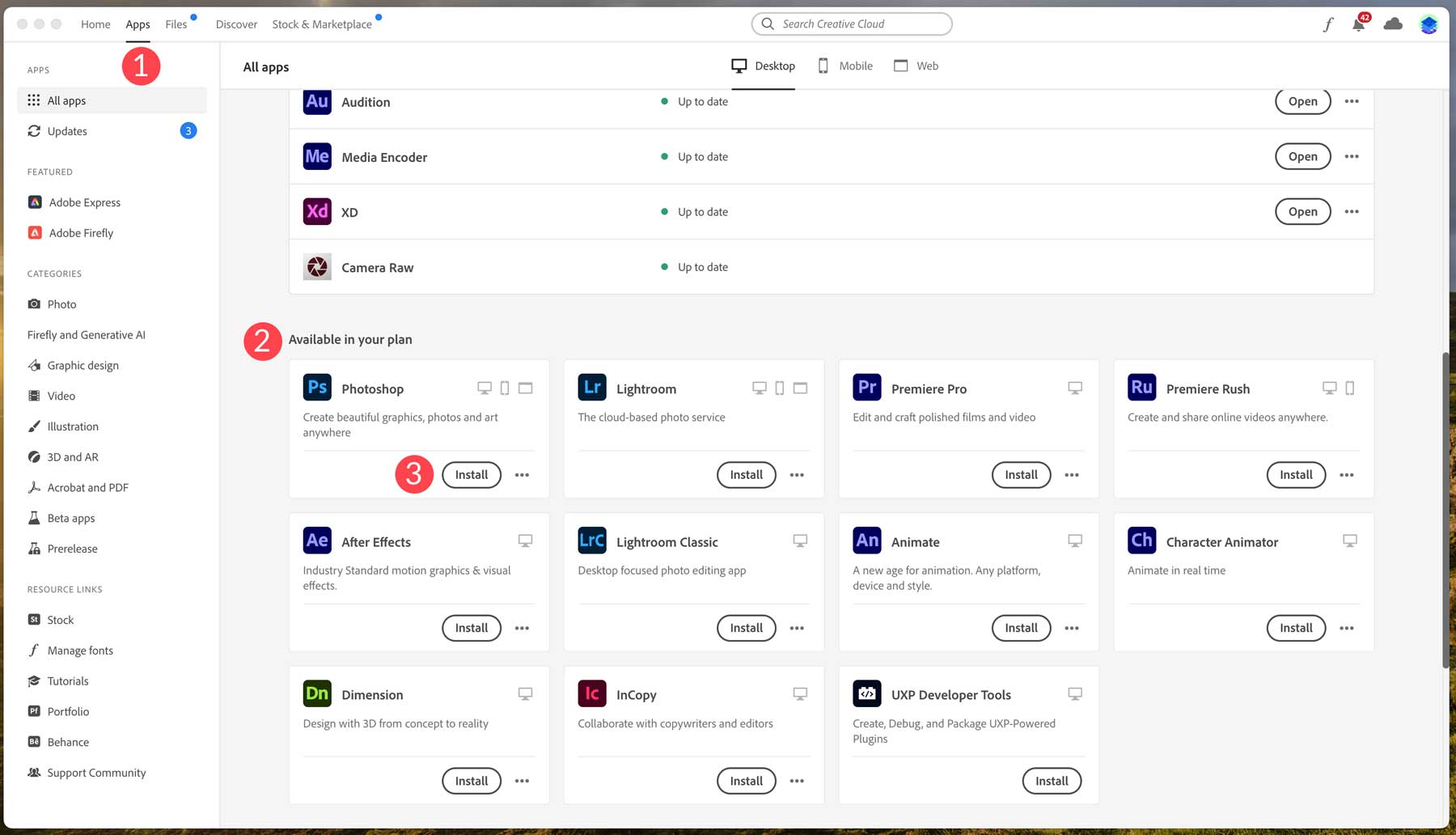
Once you’ve installed Photoshop, you’re ready to start creating. Before that, let’s look at the generative fill contextual taskbar and its settings so you know what the tools are and where they are located. The taskbar will appear underneath the image area after importing a new image or creating a new document.
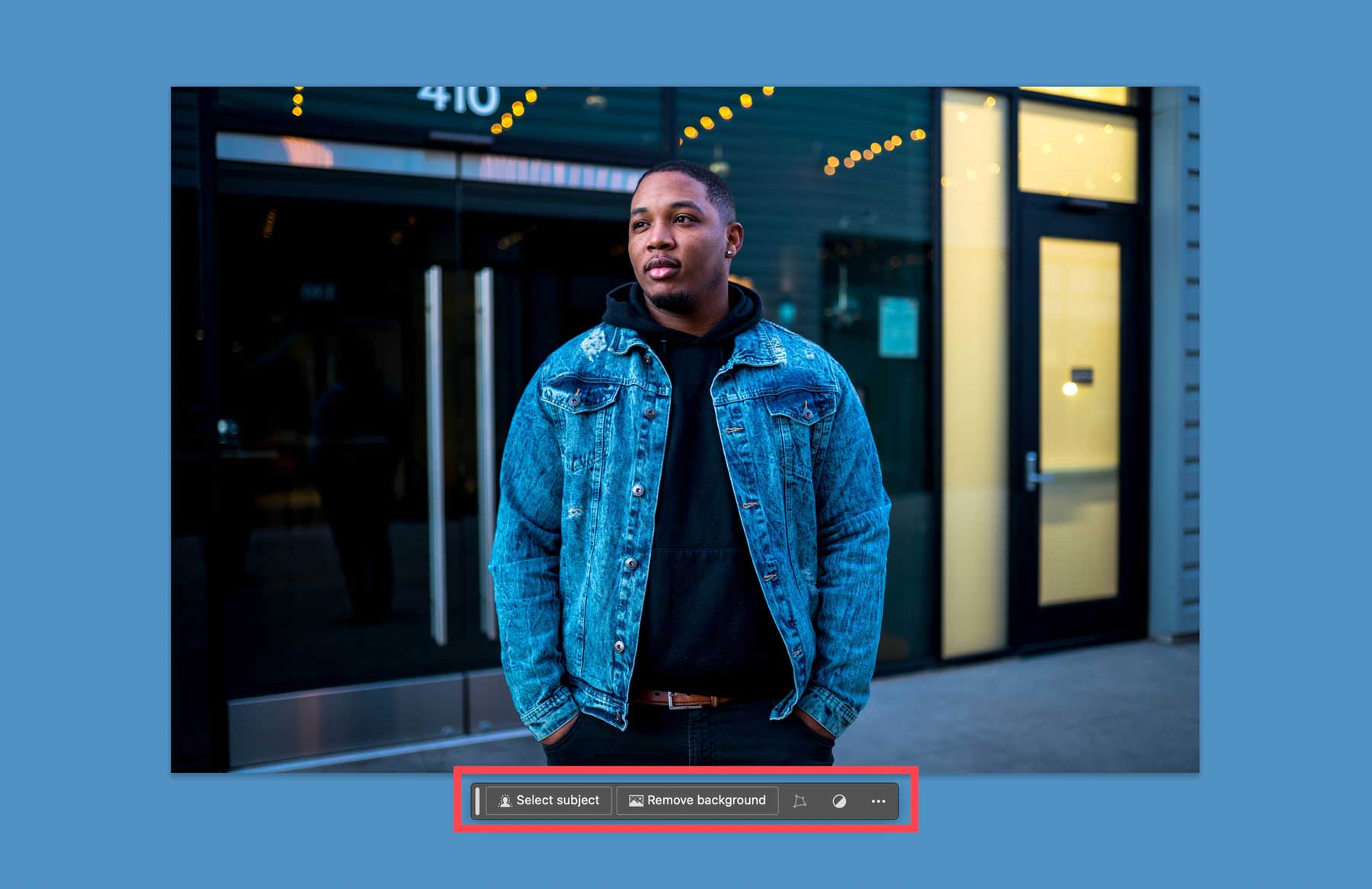
Here’s a breakdown of the taskbar’s settings when an image or subject is not selected, along with a brief description of each:
- Select subject: Use this button to allow Photoshop to select the subject of your photo. This is useful when you want to remove the background of your photos or select a subject, such as a person, car, animal, etc., that you want to use.
- Remove background: Photoshop uses AI to detect the most likely subject in your photo and deletes the background around it.
- Path tool: Using the pen tool, you can draw a path and then select the path tool to create a selection.
- Add an adjustment layer: This allows you to apply one of many adjustment presets to alter the color and tone of your image. Additionally, you can create your own adjustment layer using this tool.
- Taskbar appearance: Choose whether to show, hide, pin, or unpin the taskbar to its current location.

To make a selection in your image, you can use the select subject tool (1), any of the marquee or lasso tools (2), and the object selection, quick selection, or the magic wand tool (3). The selection appears with the marching ants (4) around it, then reveals the generative fill tools in the taskbar (5).
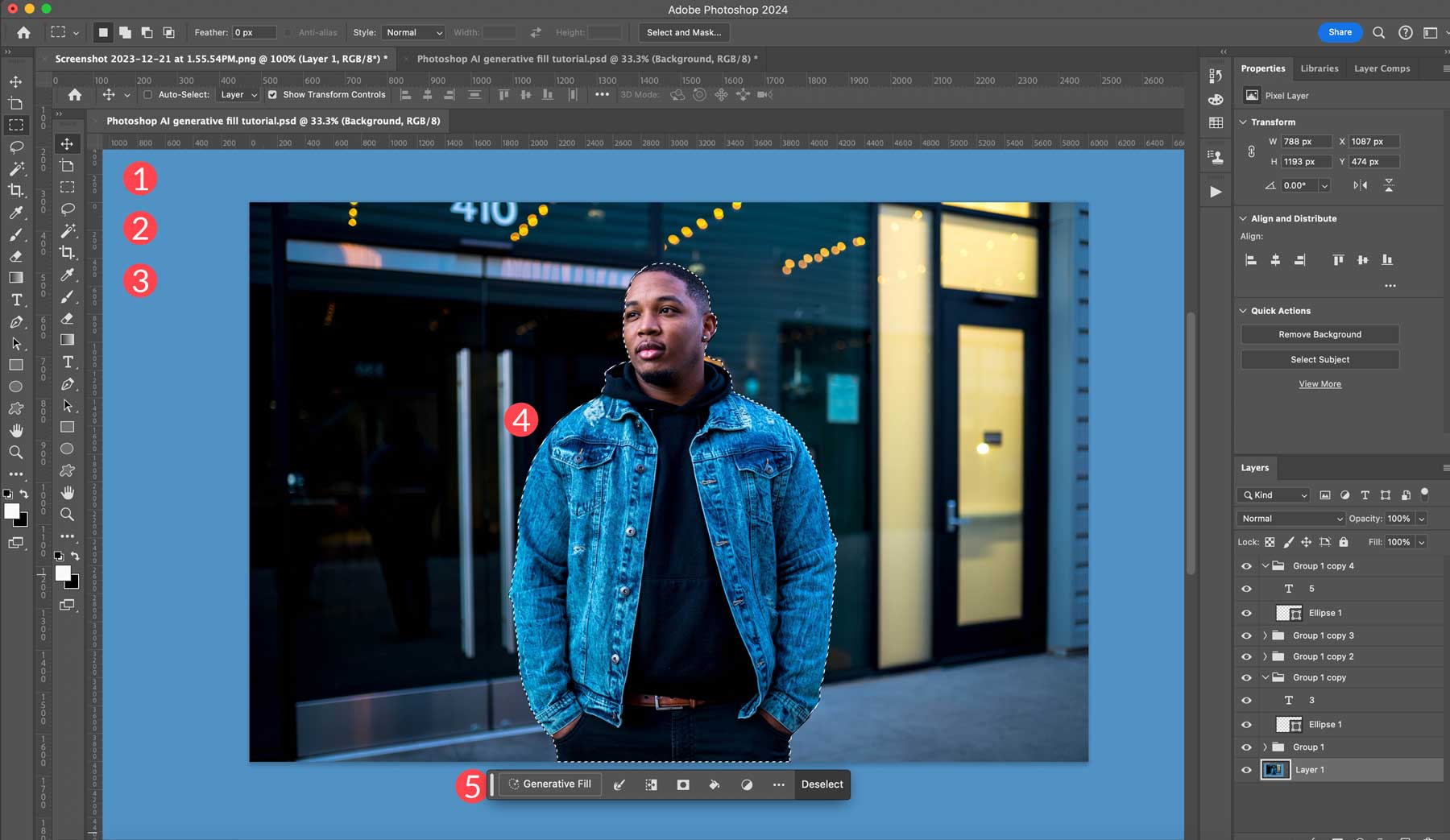
Now let’s look at the tools available when a subject is selected:
- Generative fill: Where you’ll add text prompts to create images.
- Selection tool: You can select the border, expand, contract, feather, smooth, or create a mask of the selection for better results.
- Invert selection: Selects the pixels outside of the selection rather than inside.
- Mask selection
- Fill selection with color or gradient
- Create a new adjustment layer
- Toolbar positioning settings
- Deselect selection
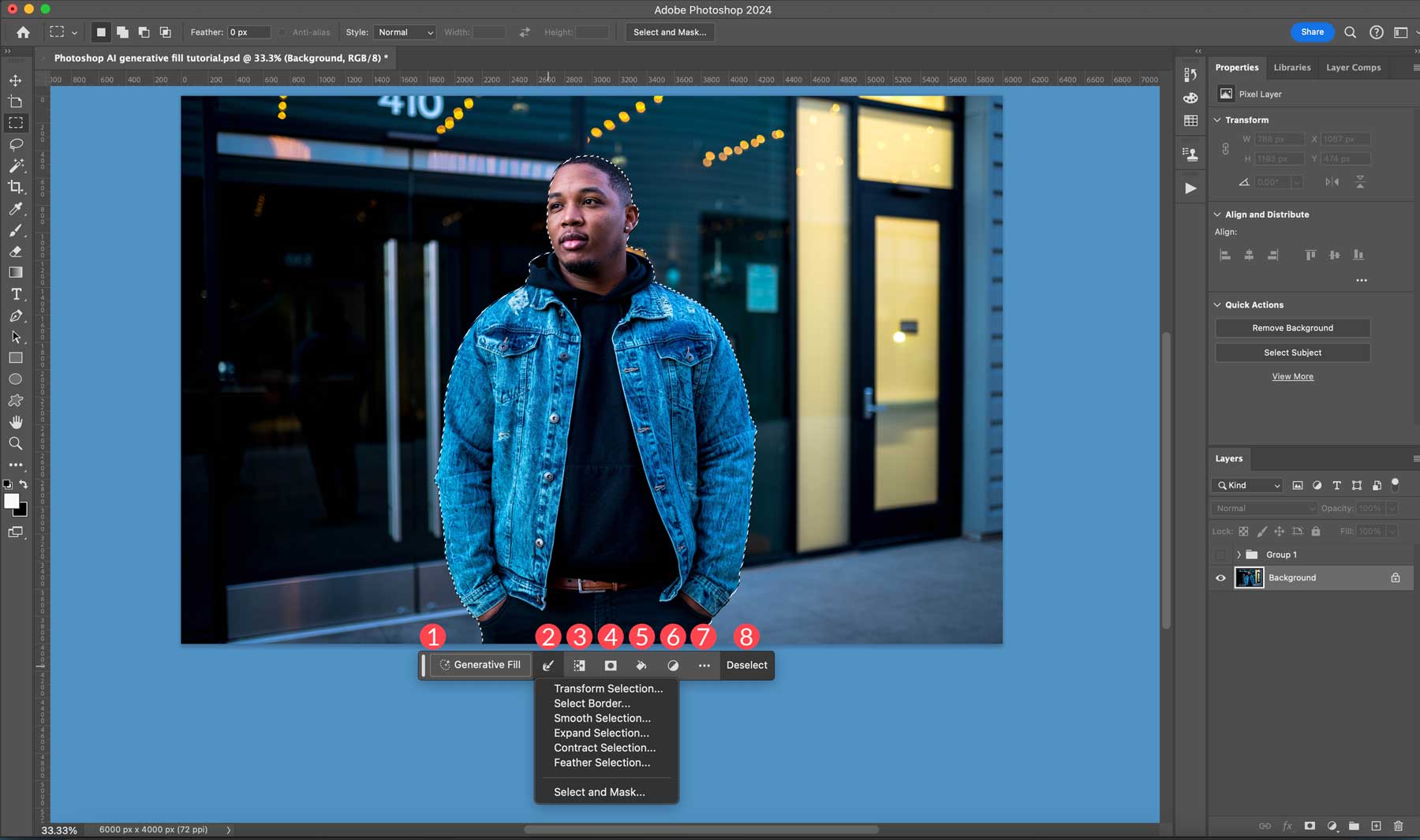
How to Use Photoshop AI Generative Fill
There are several different ways to use Photoshop AI’s generative fill tools. You can use it to create images from scratch, remove objects and backgrounds, extend the size of your canvas, change elements of your photos, and generate backgrounds or realistic objects. Even though there are just a few, these tools will save designers a ton of time editing low-quality or unattractive photos.
Extend Images With Photoshop AI
One of the best ways to use Photoshop generative fill is to extend the pixels of an image. This is a great feature for all types of users. For example, you could be a developer who needs an image with specific dimensions or a social media creator with the perfect photo for their Facebook profile, but it needs to be a different size.
To extend an image, select the crop tool.
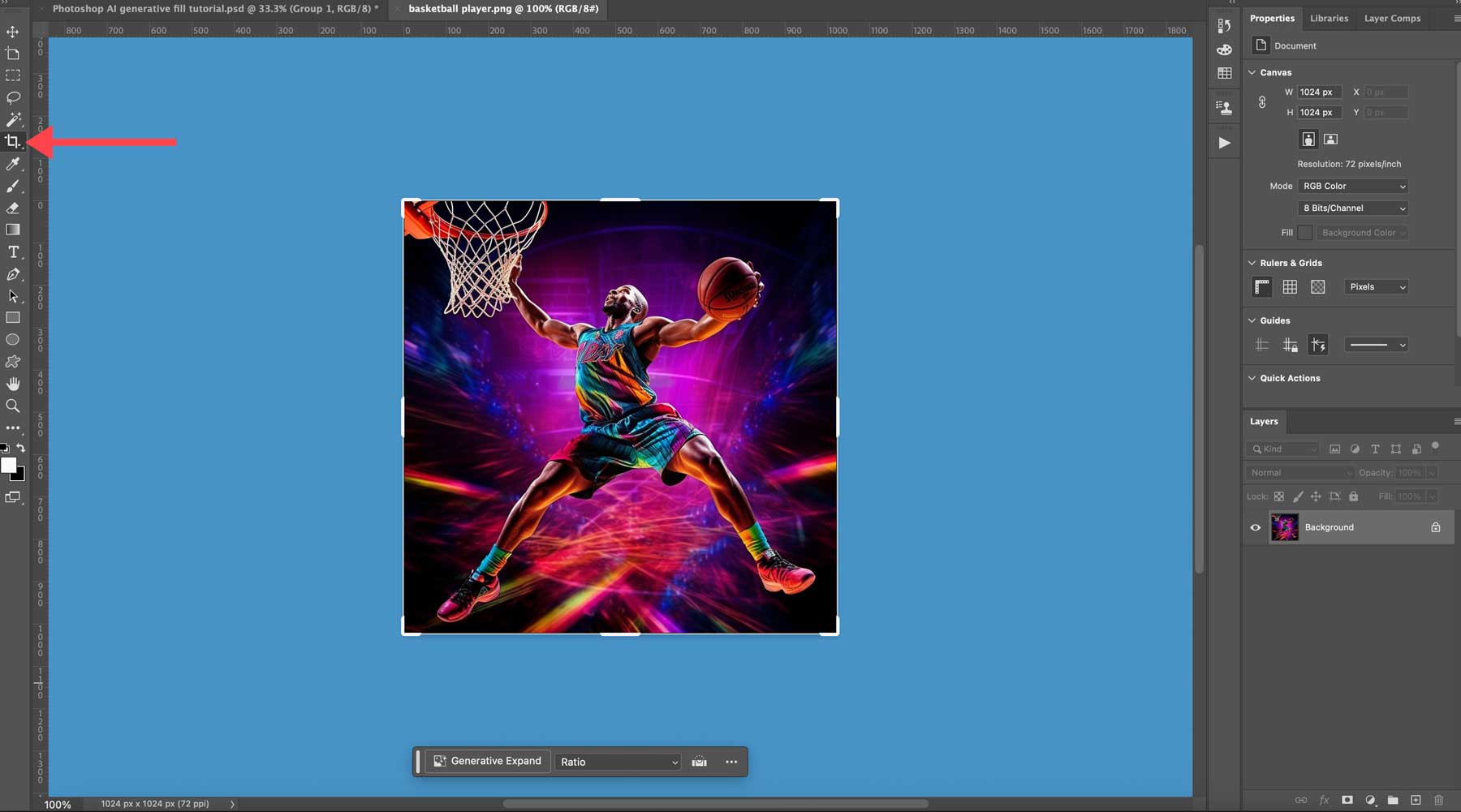
With the crop tool selected, click and drag the left side of the image container and then the right to create even space on both sides. Once satisfied with the dimensions, click the check button on the toolbar at the top of the Photoshop window.
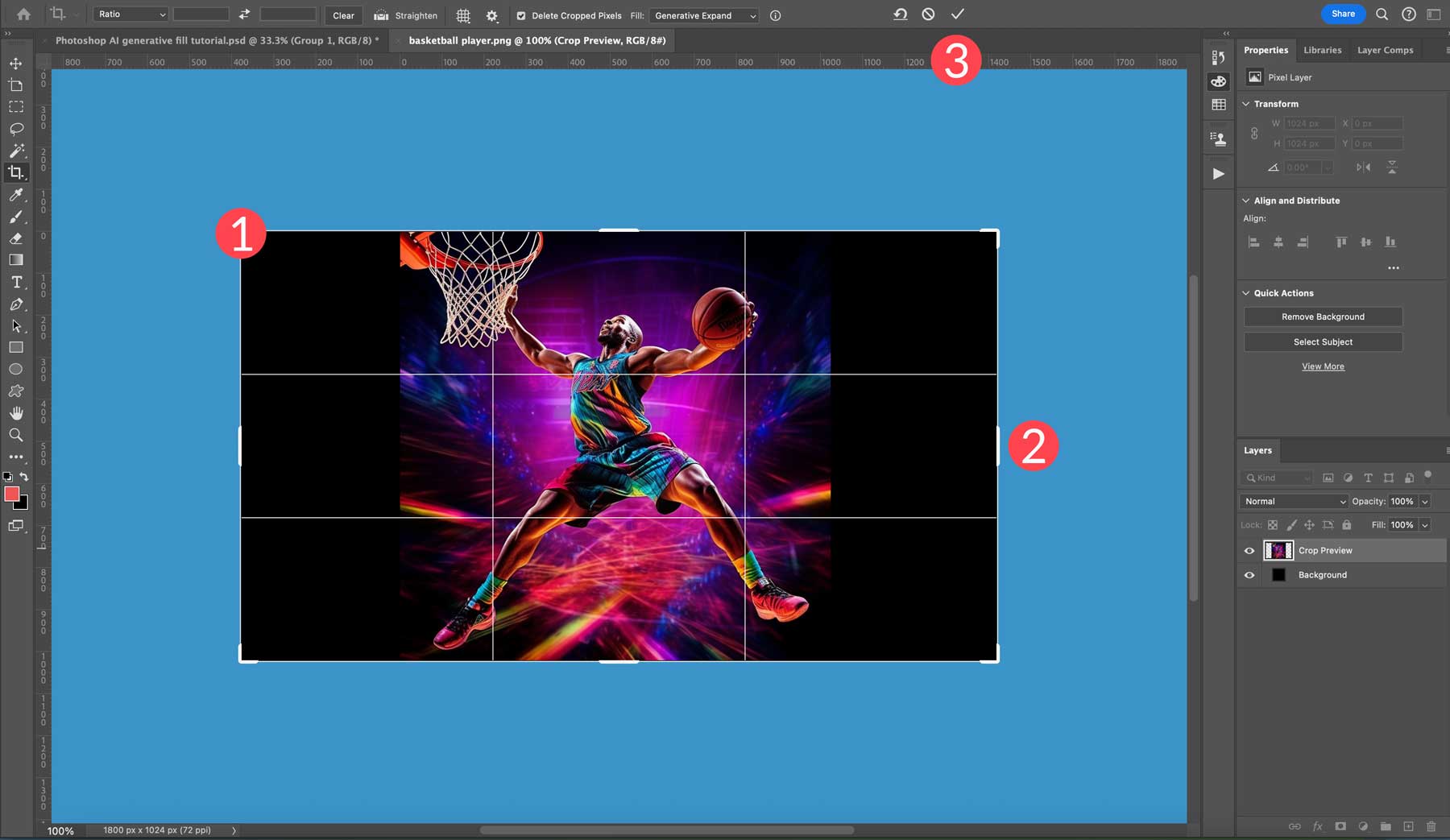
Here’s what our image looks like after Photoshop fills in the blank areas of our canvas. After using generative fill, you’ll have three variations, which can be found in the generative layer properties. As previously mentioned, Photoshop generates a new layer, complete with a mask, so your original image remains untouched. If you aren’t satisfied with the results, you can click the generate button, which provides you with three new variations. You can repeat that process as many times as you like to get the results you’re looking for. Delete any variations you rule out to keep the file size down.
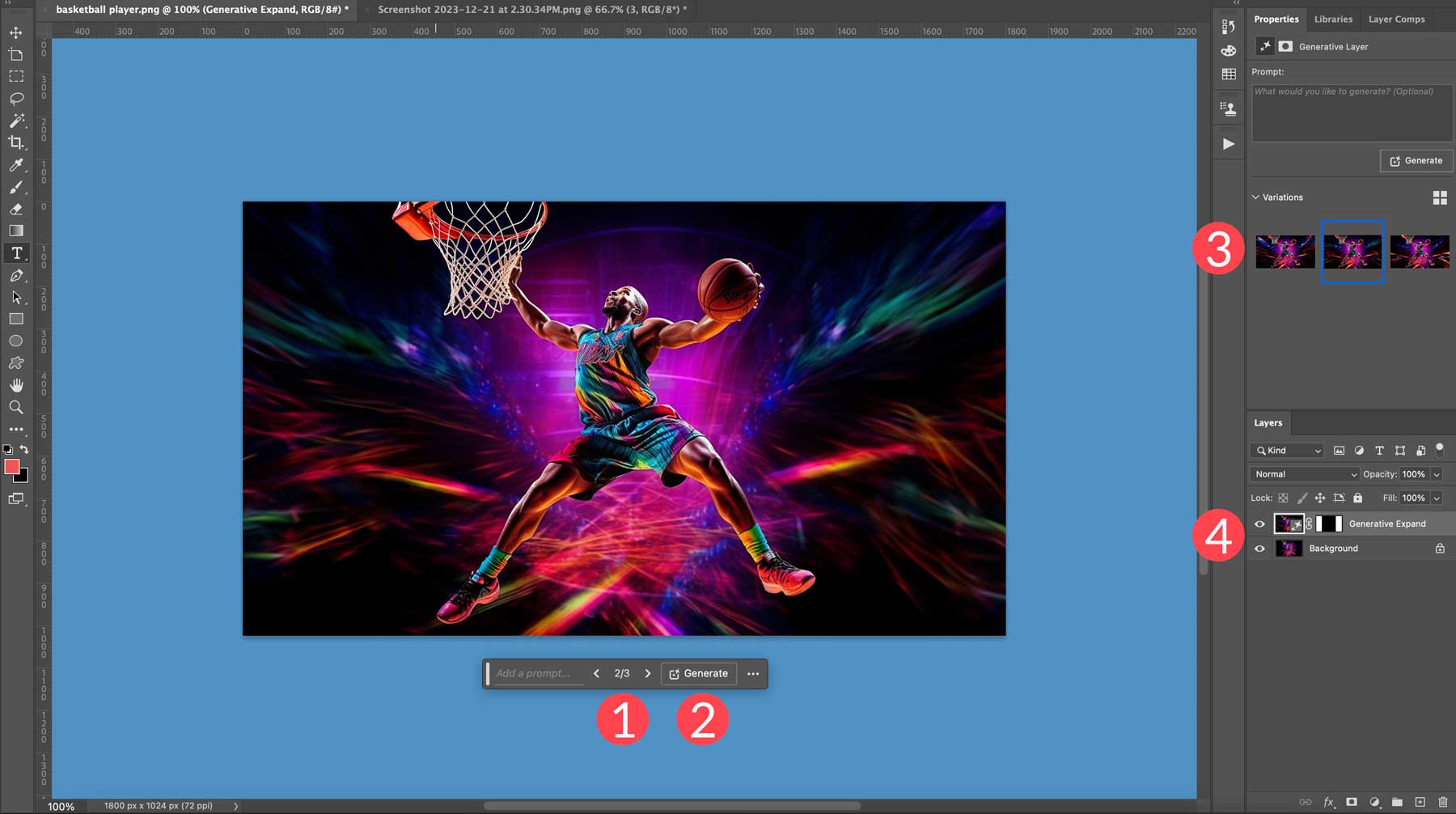
Generate Backgrounds with Photoshop AI
In addition to extending the image area of your canvas, you can use generative fill to replace backgrounds in your images. For this step, we’ll eliminate the background of our car image and replace it with a depiction of the salt flats in Utah. First, you want to ensure nothing is selected. We can use the select subject button for our image, but other selection tools may produce a better result depending on the image you decide to use.
With your subject selected, click the invert selection tool. Make any necessary adjustments to your selected area, then click the generative fill button.
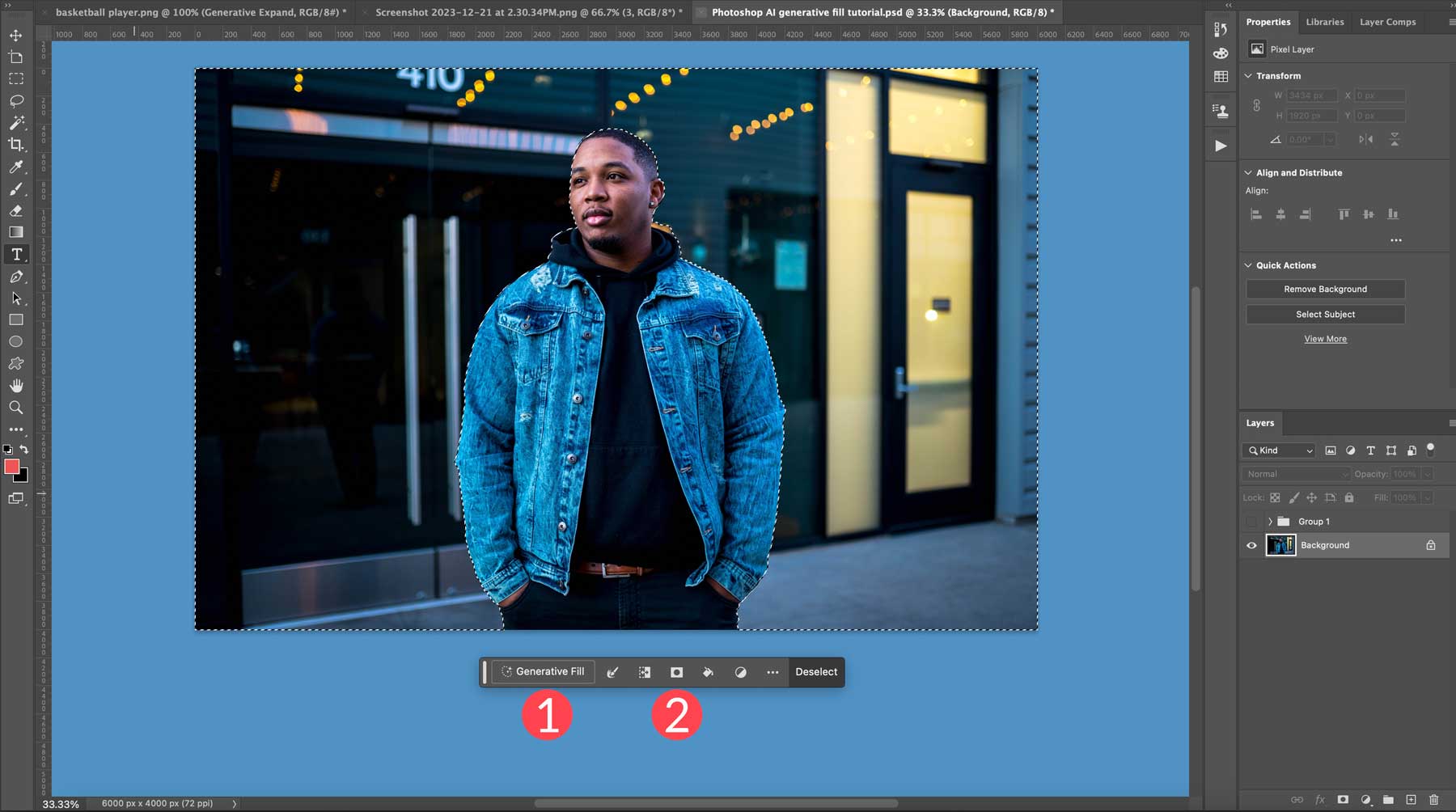
When the text prompt appears, type in the background you wish to see. We used mountain trail for this example. Next, click the generate button.
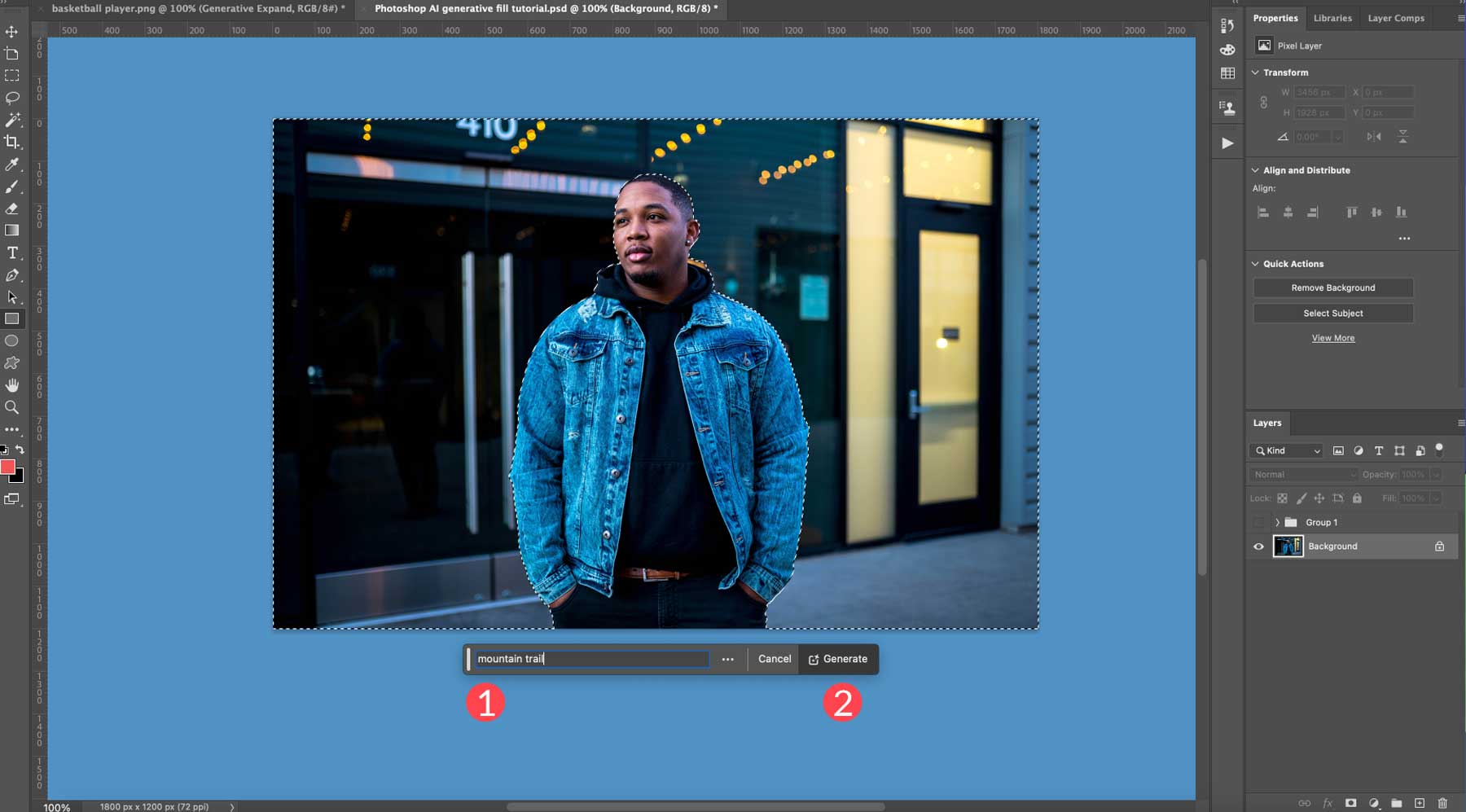
Generate Realistic Objects With Photoshop AI
Now that we have the background let’s use generative fill to change the man’s jacket in the photo. Using the quick selection tool (1), we’ll draw a selection around his denim jacket. Be careful not to include any part of his shirt or surrounding areas, as Photoshop will overwrite any selected pixels with the information in the text prompt. Next, click the generative fill button (2).
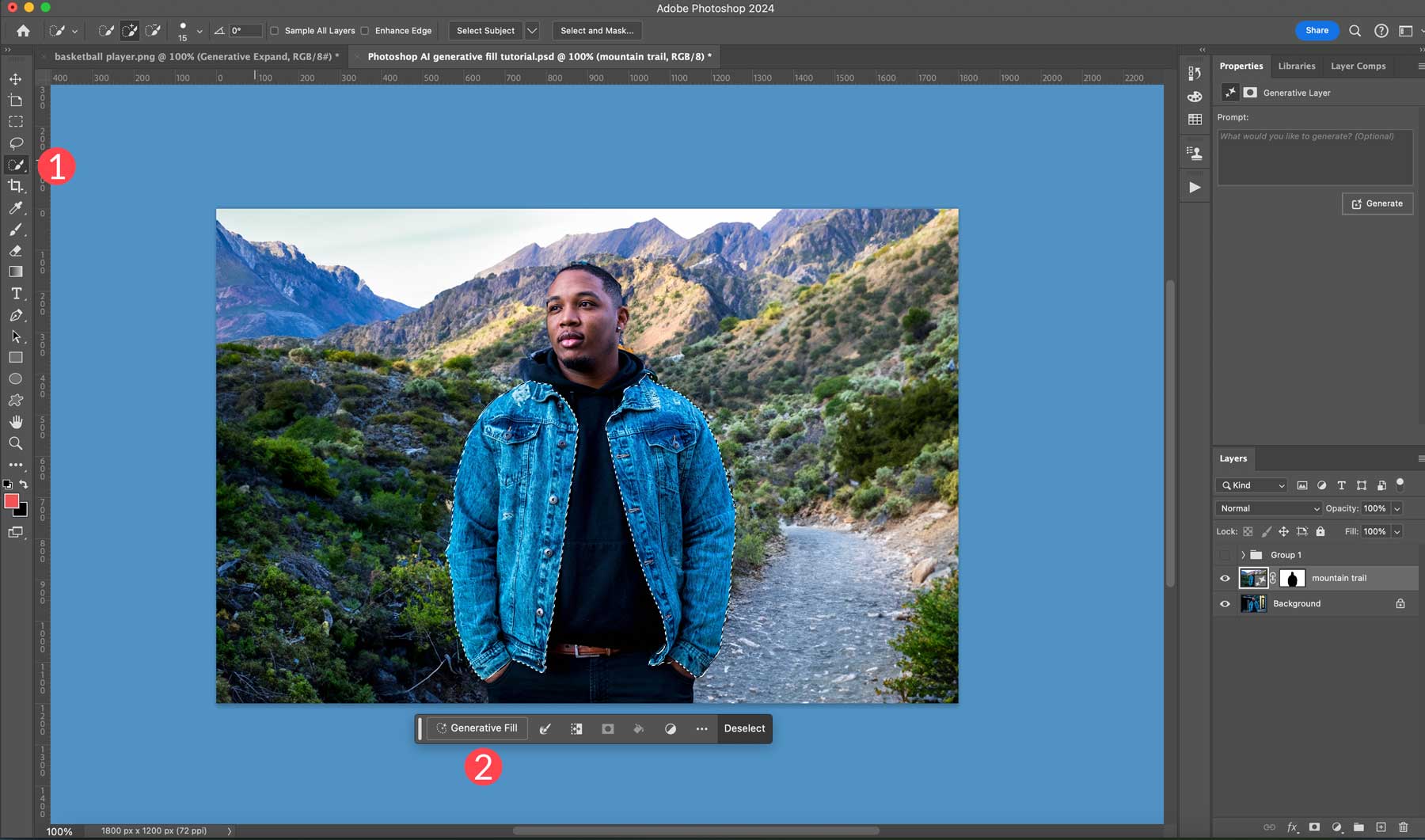
The next step is to enter the following prompt: puffer jacket. Then, click generate.
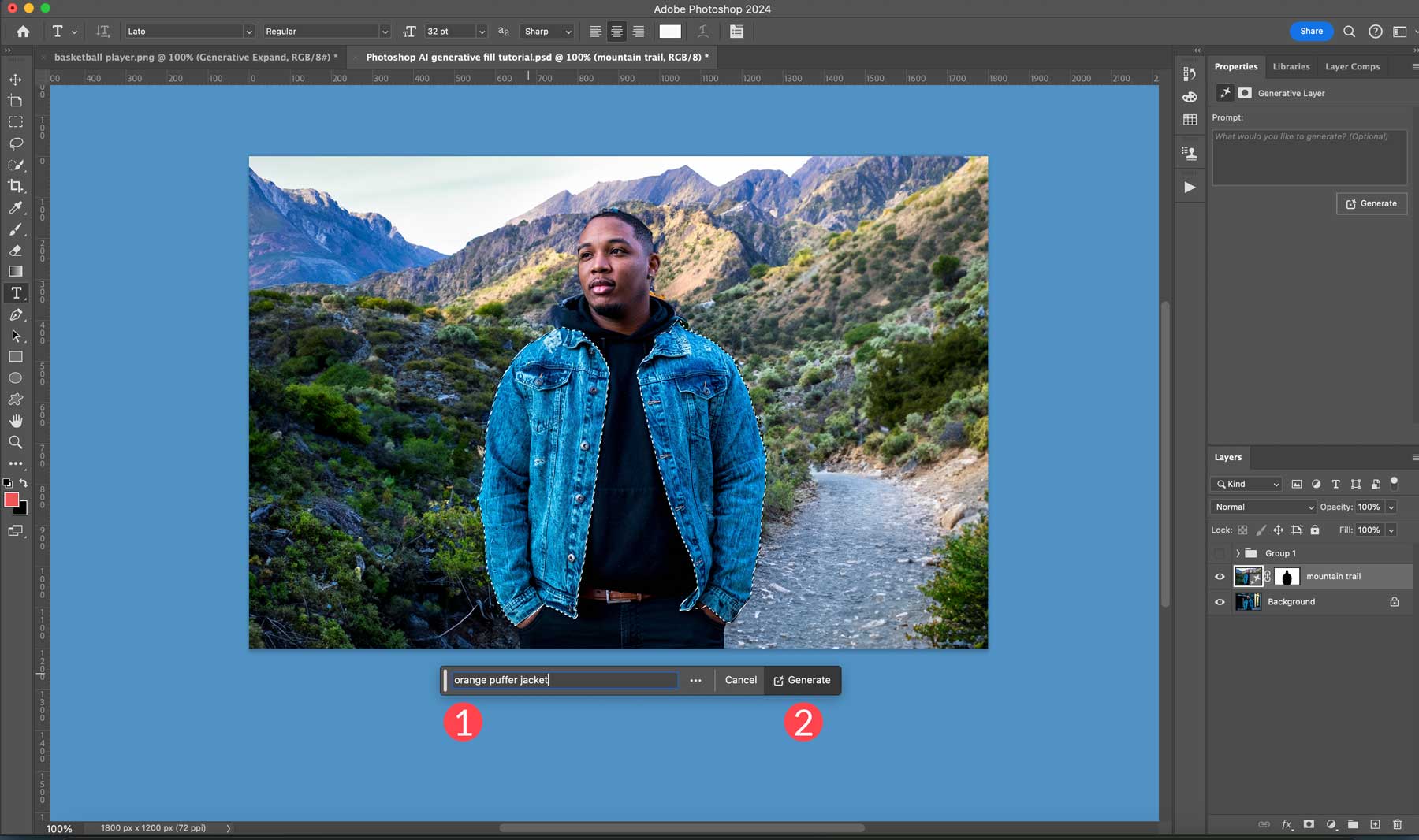
As you can see, Photoshop replaced the man’s denim jacket with an orange puffer.
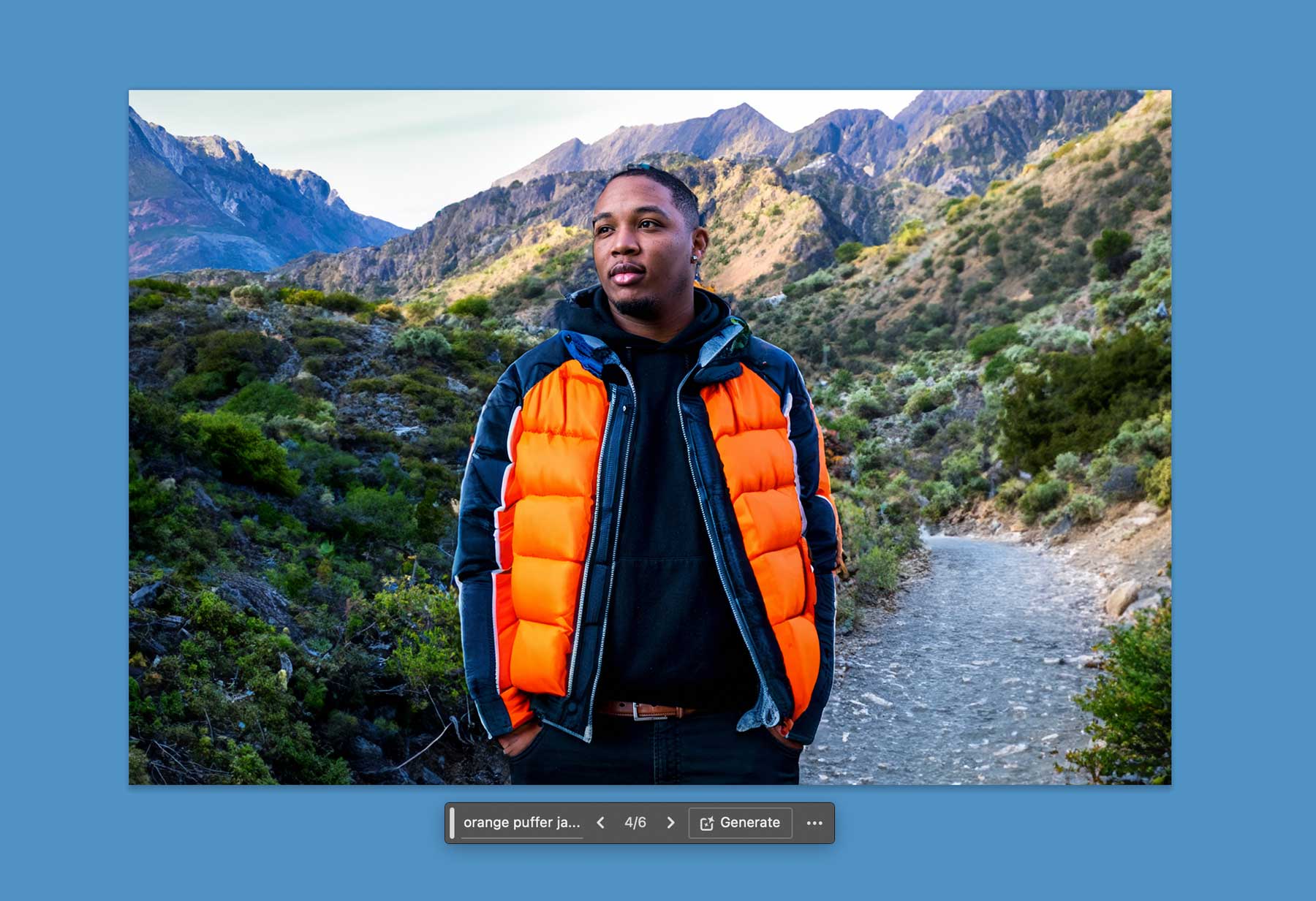
Remove or Replace Objects With Photoshop AI
Another cool feature of Photoshop AI’s generative fill is the ability to remove or replace objects in your photos. Let’s say you have a perfect image minus a few blemishes. Using AI, Photoshop will remove aspects of your image and fill it with surrounding pixels in the picture. It’s similar to the content-aware tool but goes way beyond that. Rather than getting a muddy, odd appearance, the replaced portions of your image are so seamless it’s nearly impossible to tell the difference.
For example, we’d like to replace the lower half of a woman’s dress in this photo, so we’ll need to remove the one currently there. As you can see, when creating images with Jasper or another AI art generator, there will sometimes be imperfections. Thankfully, Photoshop AI can fix that.
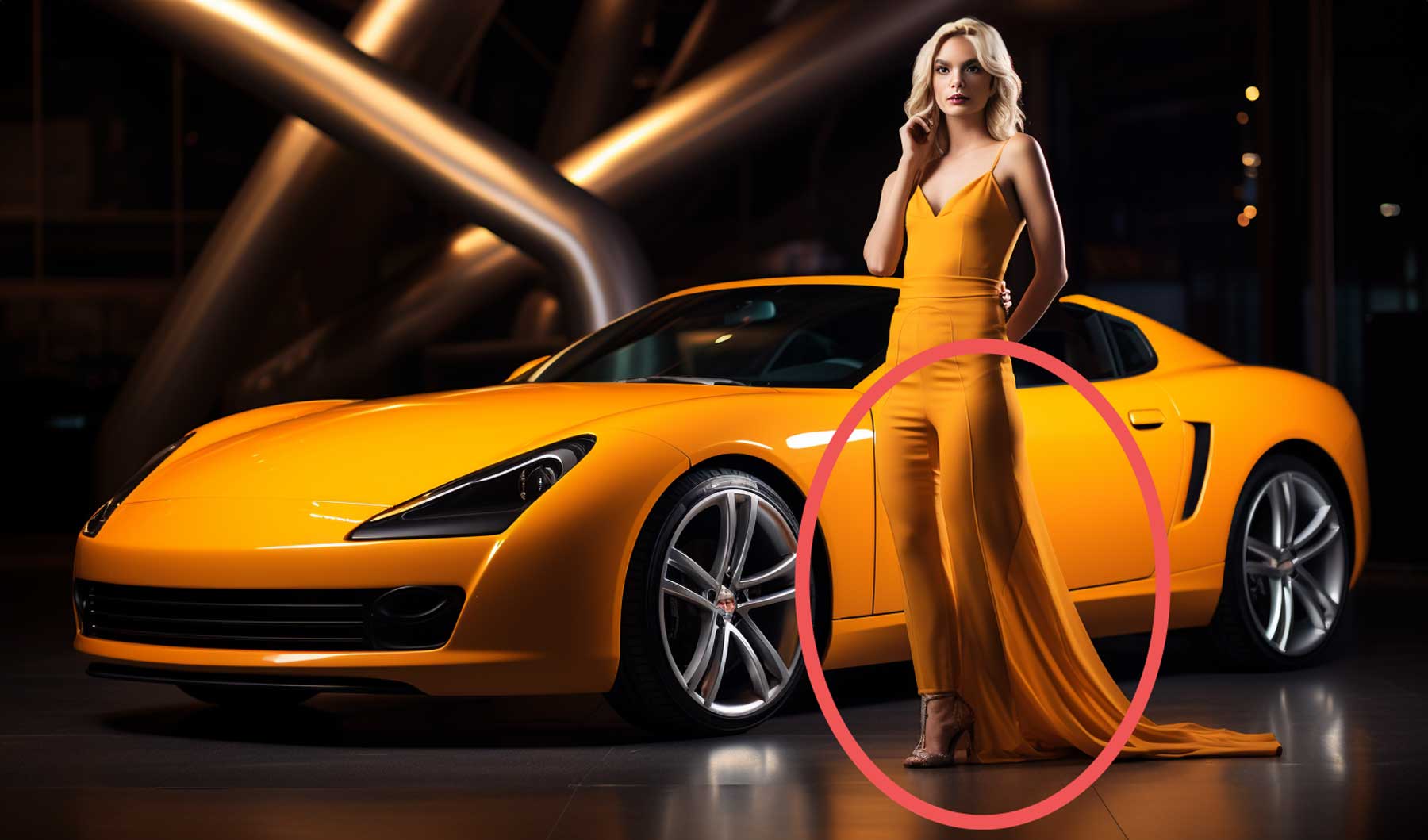
Using the lasso tool, form a selection around the lower part of her dress, click generative fill, then generate. This will tell Photoshop to replace what’s in the selection with surrounding pixels in the image. Be sure to leave the text prompt empty unless you want to add something in its place.
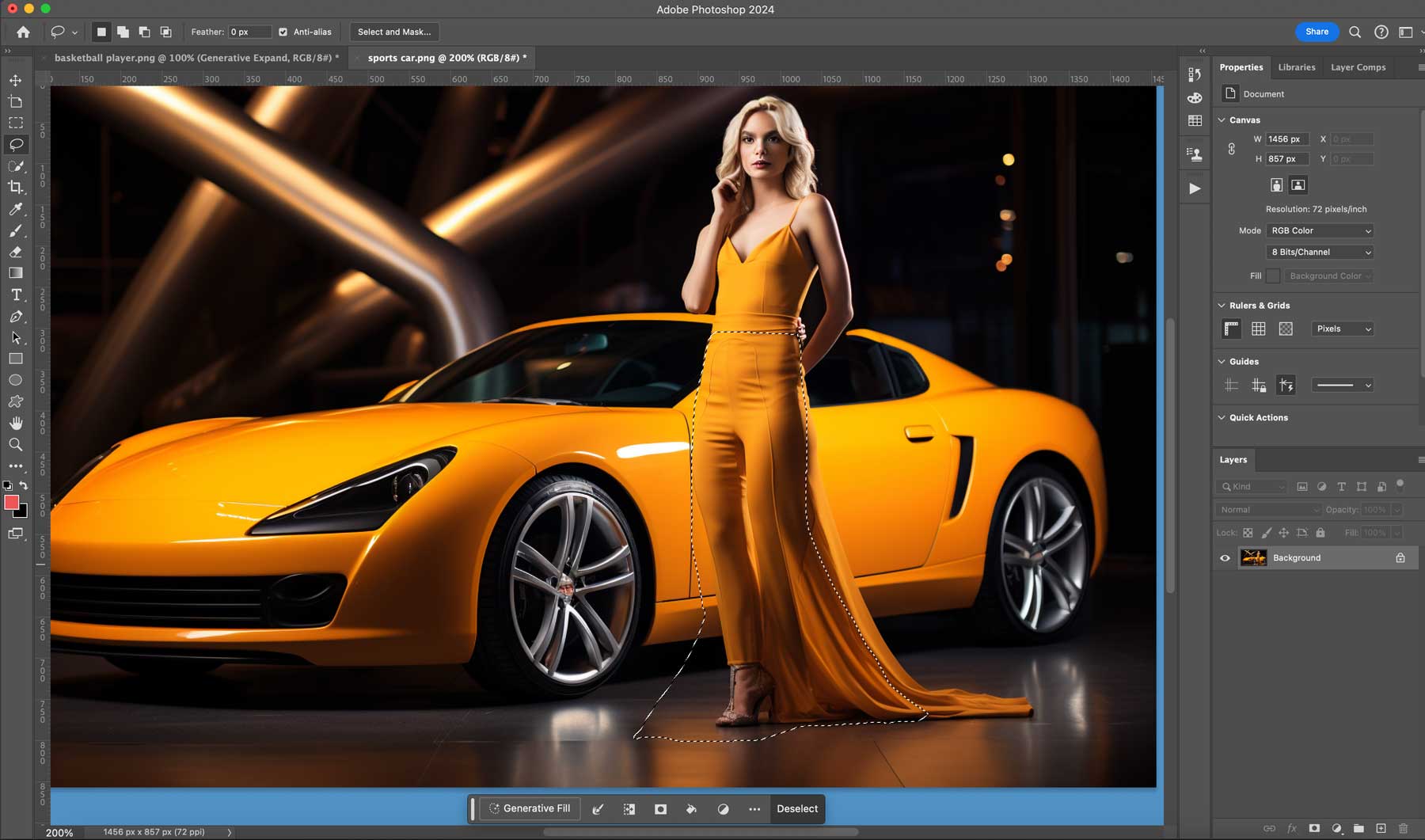
Photoshop does a good job of correcting the dress as if it were like that all along.
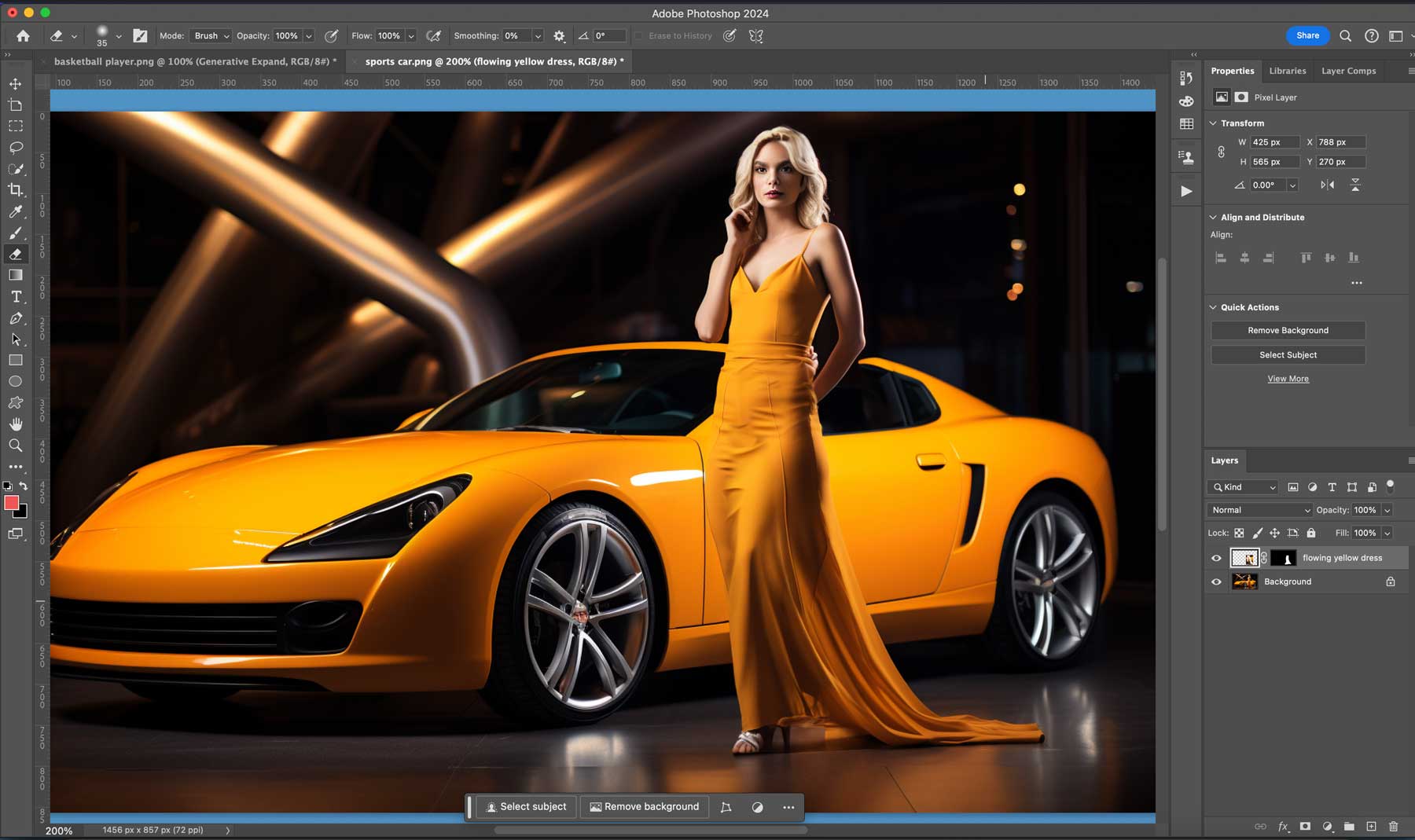
Create Unique Composite Images
In addition to altering existing images, Photoshop’s AI generative fill can create them too. However, Photoshop struggles with images larger than 1024 pixels, often resulting in lower-quality photos. So, with that in mind, when creating new images, you’ll either need to create a canvas no larger than 1024 pixels (w x h) or generate your composite image in sections.
Start with a blank canvas measuring 1920 pixels wide by 1024 pixels tall. We’ll set the resolution to 300 pixels, select RGB as the color mode, and set the background color to white.
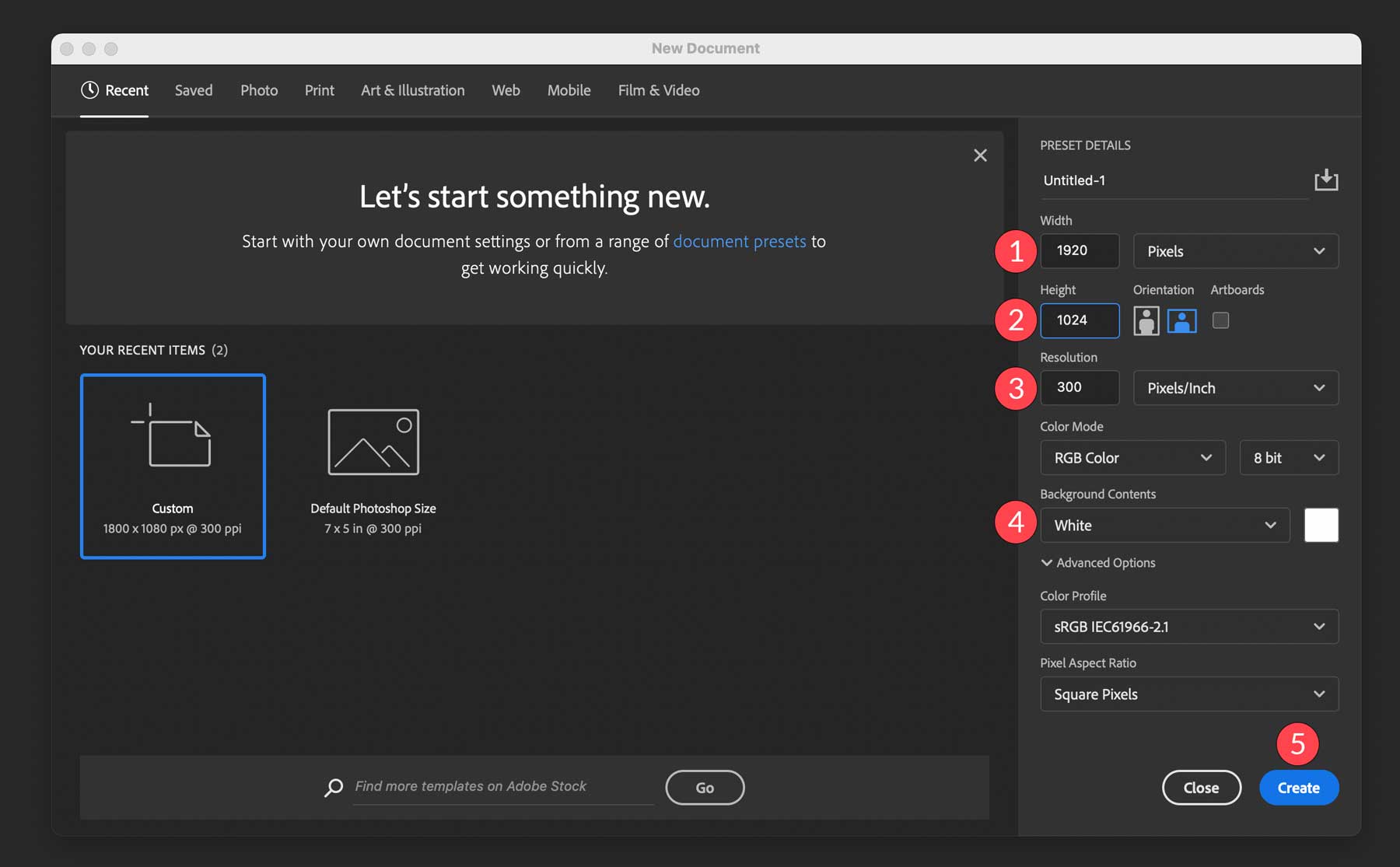
Next, use the rectangular marquee tool to draw a rectangular selection around the lower third of your image.
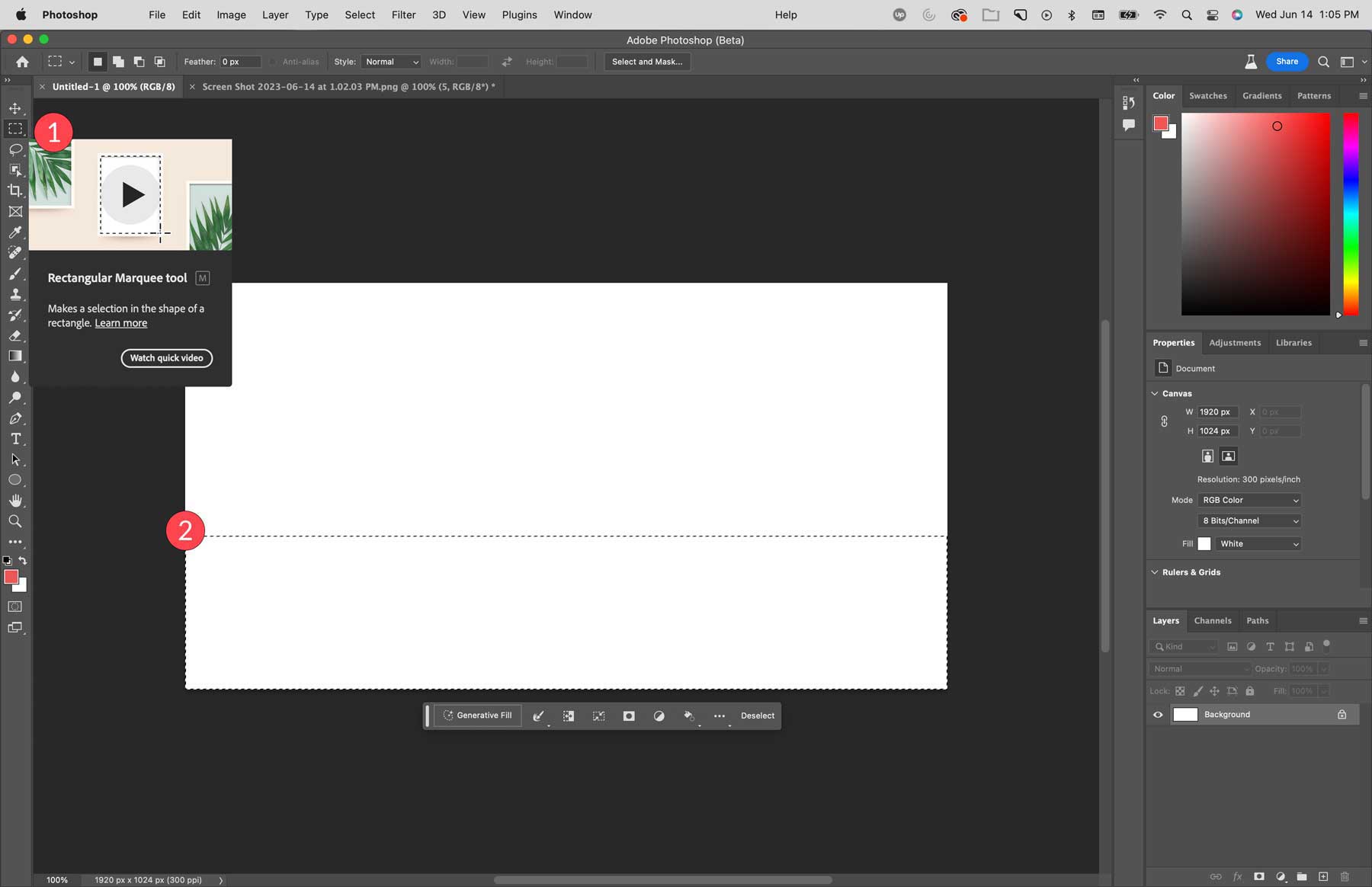
Using the generative fill tool, type in beach sand with ocean waves, then click generate.
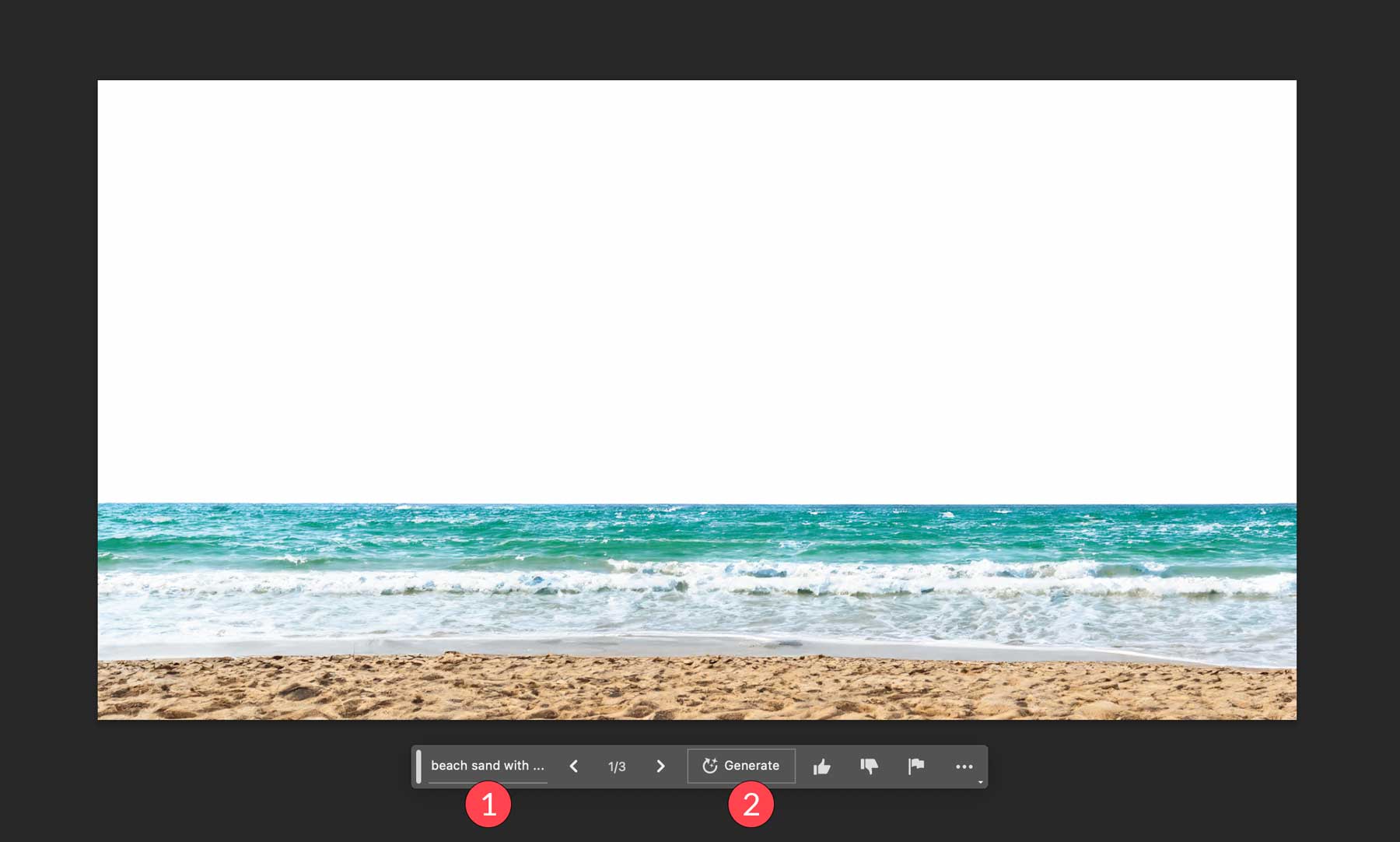
Next, draw a selection around the middle third of your image, click generative fill, and enter the following prompt: majestic snow-capped mountain range. Then click generate to create the section.
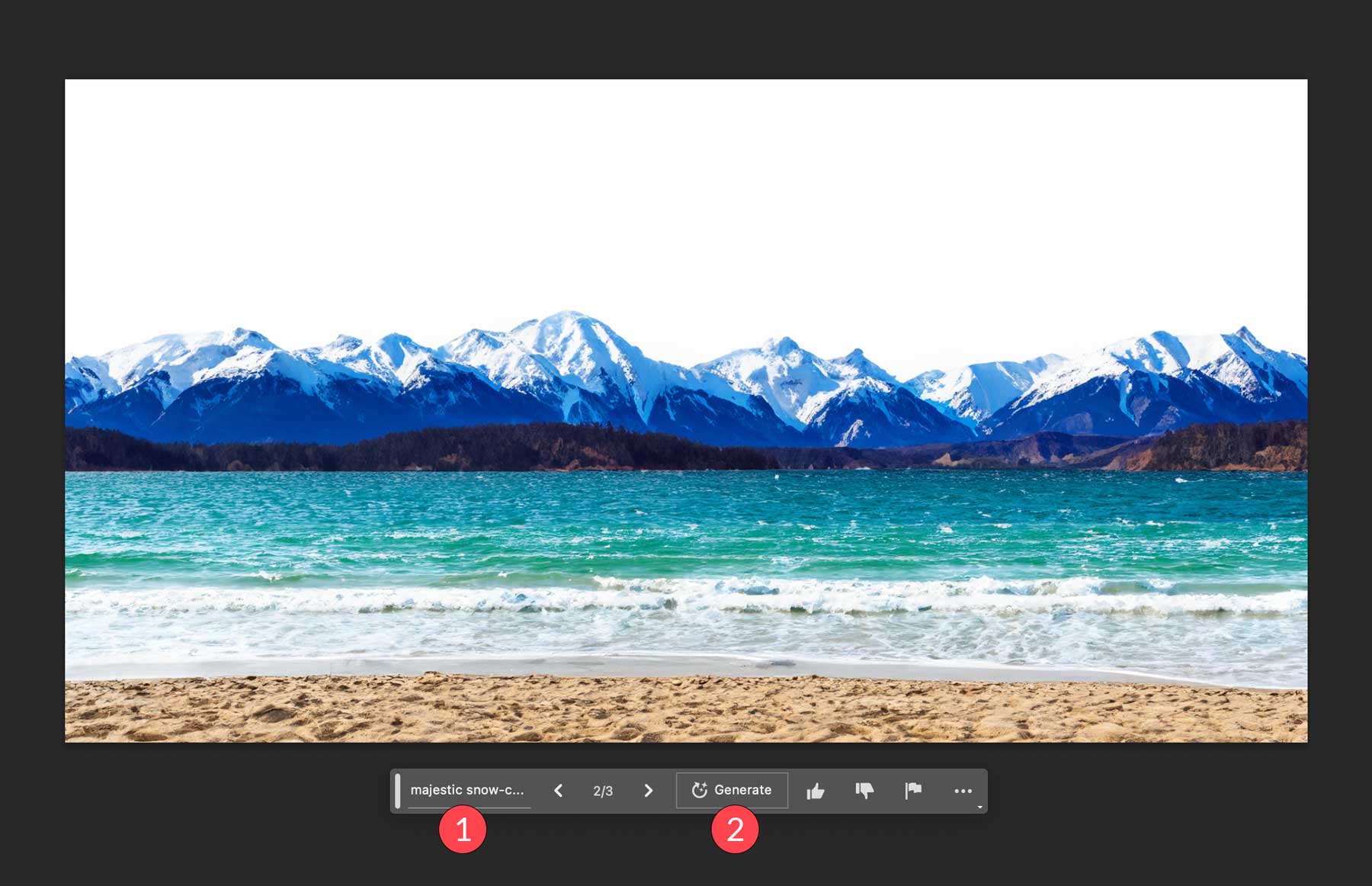
For the third selection, draw a rectangular selection around the upper third of your image. Enter sun-filled sky, sparse clouds as the text prompt, then click generate.
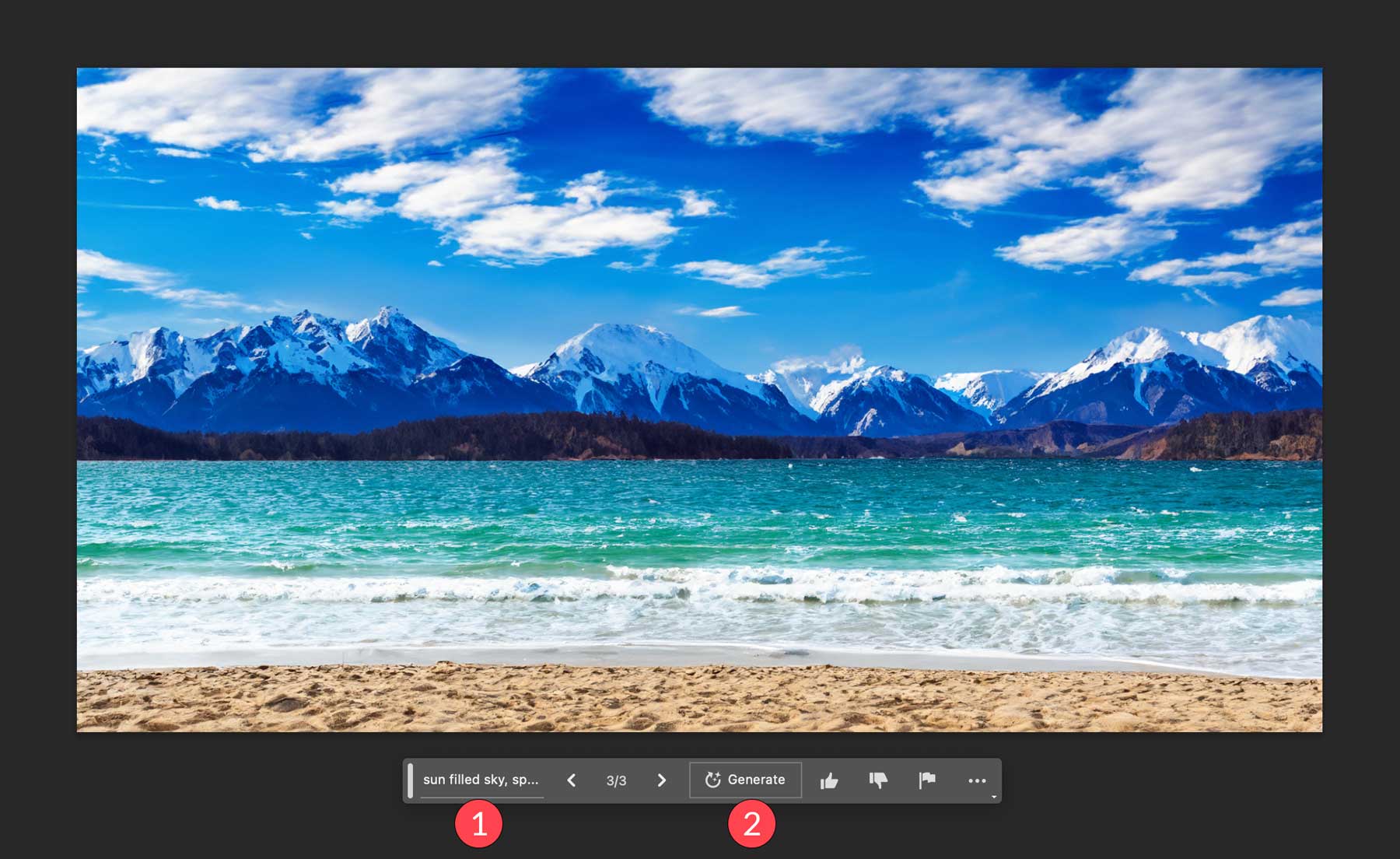
Now that we have our background let’s add a couple of accents. Start by creating a selection in the water with the lasso tool. Click generative fill, add the text prompt yacht in an ocean, then click generate.
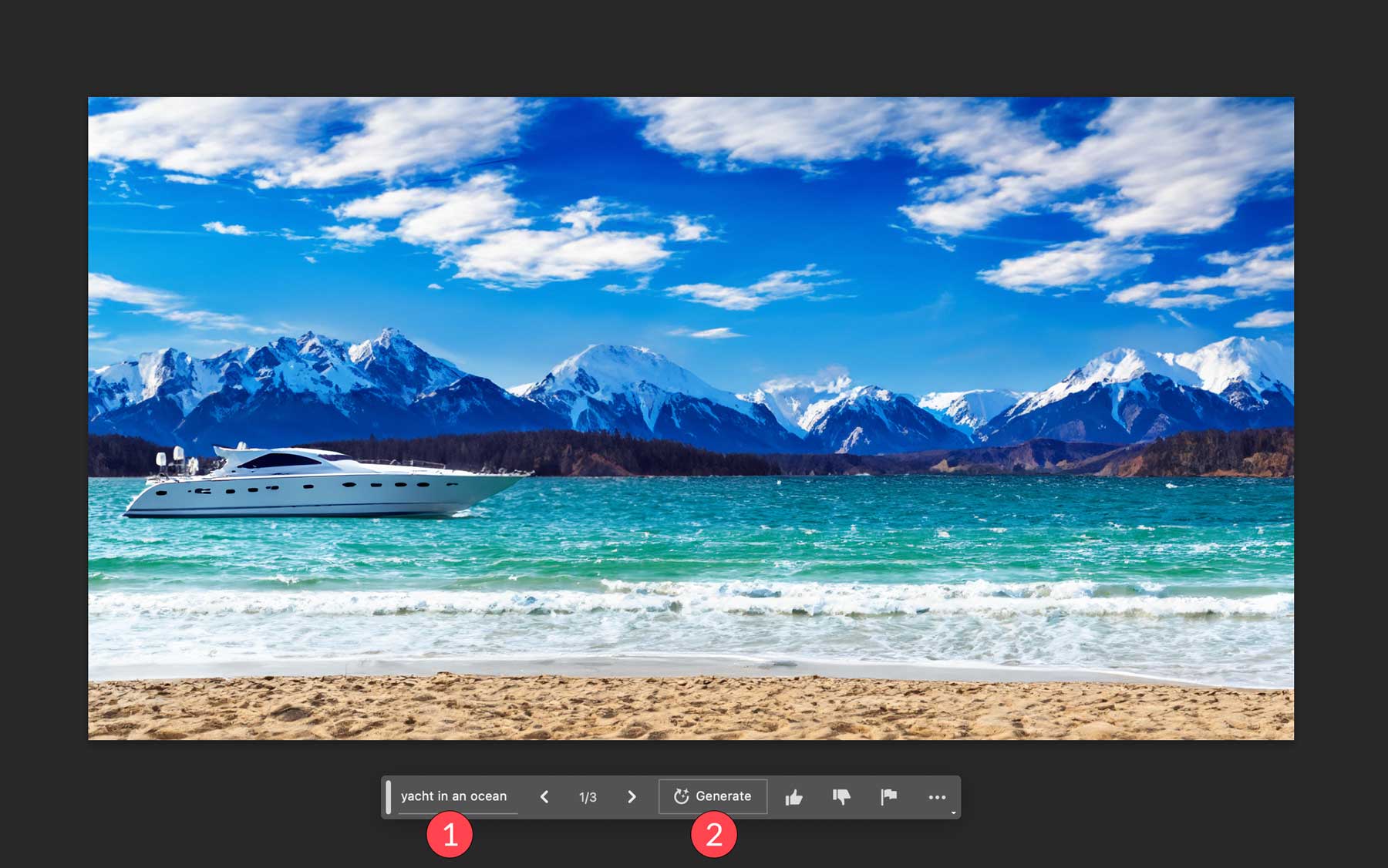
Lastly, we’ll add a man with two dogs looking out at the scenery. Form a selection using the rectangular marquee tool over the lower right corner of the composite image. Use the text prompt dog and its owner looking over the ocean, then click generate.
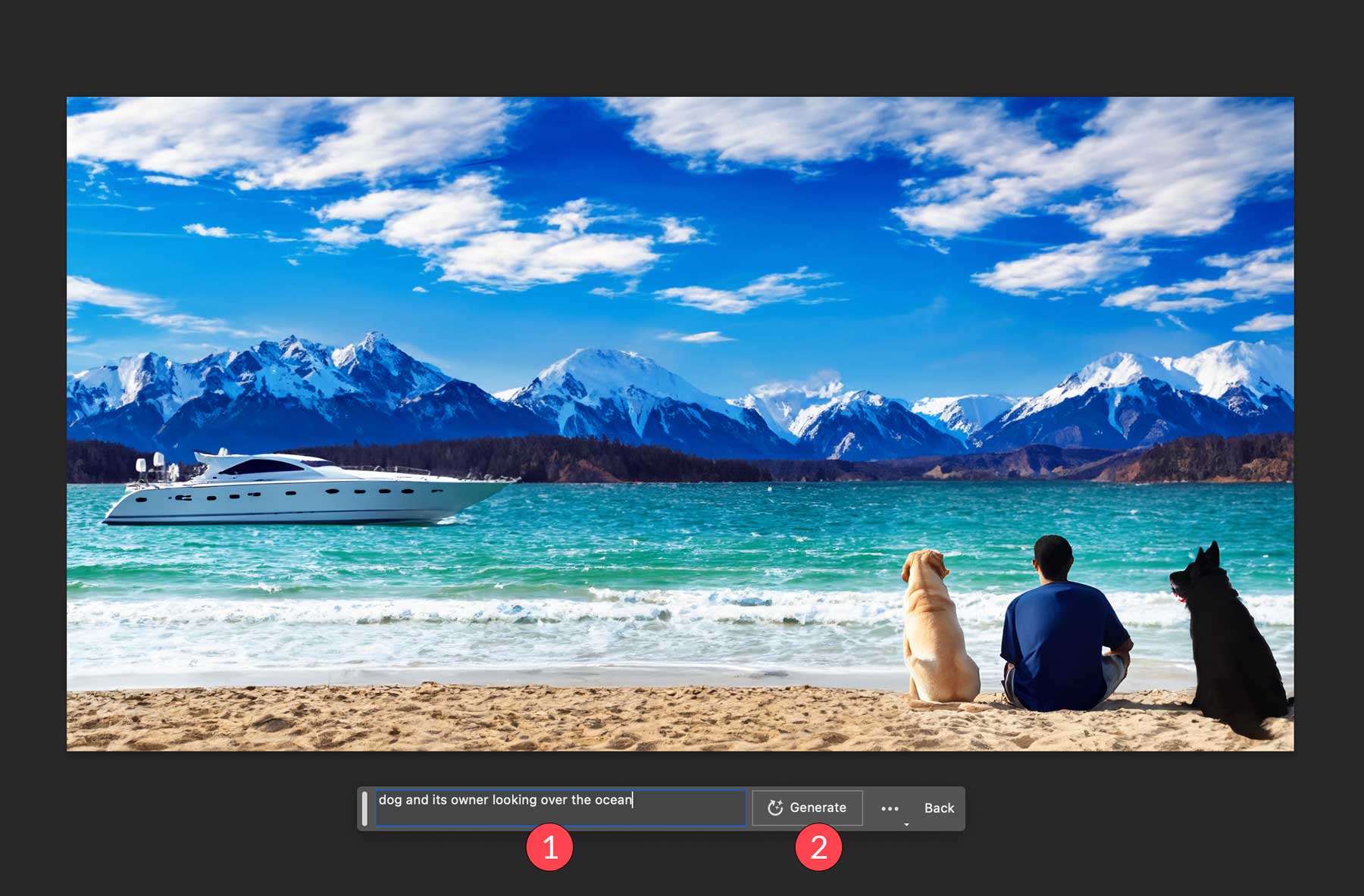
Photoshop AI Generative Fill Tips
Now that you better understand how generative fill works, we’d like to give you a few tips to help you use it more effectively. While Photoshop’s AI tools work great all on their own, there are a few ways to get better results and combine them with other features in Photoshop.
It’s OK to Leave the Prompt Blank
When you want to remove an element, select where you want the object removed, click generative fill, and generate without entering a text prompt. This lets Photoshop know that you don’t wish to add anything; you only want to fill the selection with a look similar to the surrounding image pixels. It’s a great way to clean up photos with undesirable elements.

Be Creative With Your Selection
One unique feature of Photoshop AI’s generative fill tool is that the shape and size of the selection matter. For example, if you want to add a hat to a person in your image, be sure to draw your selection as closely as possible regarding the type of hat you’d like. Additionally, note that small selections add a smaller design element, whereas a large selection would result in a larger object. Using the appropriate shape for the item you want to add is an excellent way to give Photoshop more details on what you want, resulting in better output.

Don’t Use Instructional Prompts
One thing that Photoshop AI doesn’t do well is determining instructional prompts. Avoid using words like create, alter, or make when inputting your text prompts. Using descriptive adjectives and nouns will always give you better results. For example, if you generate an image of a dog, select the area around it, and then tell Photoshop to make the dog bigger, it will likely result in an entirely different picture of a dog rather than a bigger version of the original one. Unlike other AI design tools, less is more. Photoshop’s AI doesn’t require descriptive styling words like highly detailed or cinematic photography because it will match the style of the photo you’re editing.
Utilize the Object Selection Tool
Some users might not love the marching ants (selection) when working in Photoshop. After all, they can sometimes be hard to see. A better way to make your selections stand out is by using Photoshop’s object selection tool. It’s excellent for highlighting individual areas for heightened visibility and gives you a more visual representation of the area you’re working with.
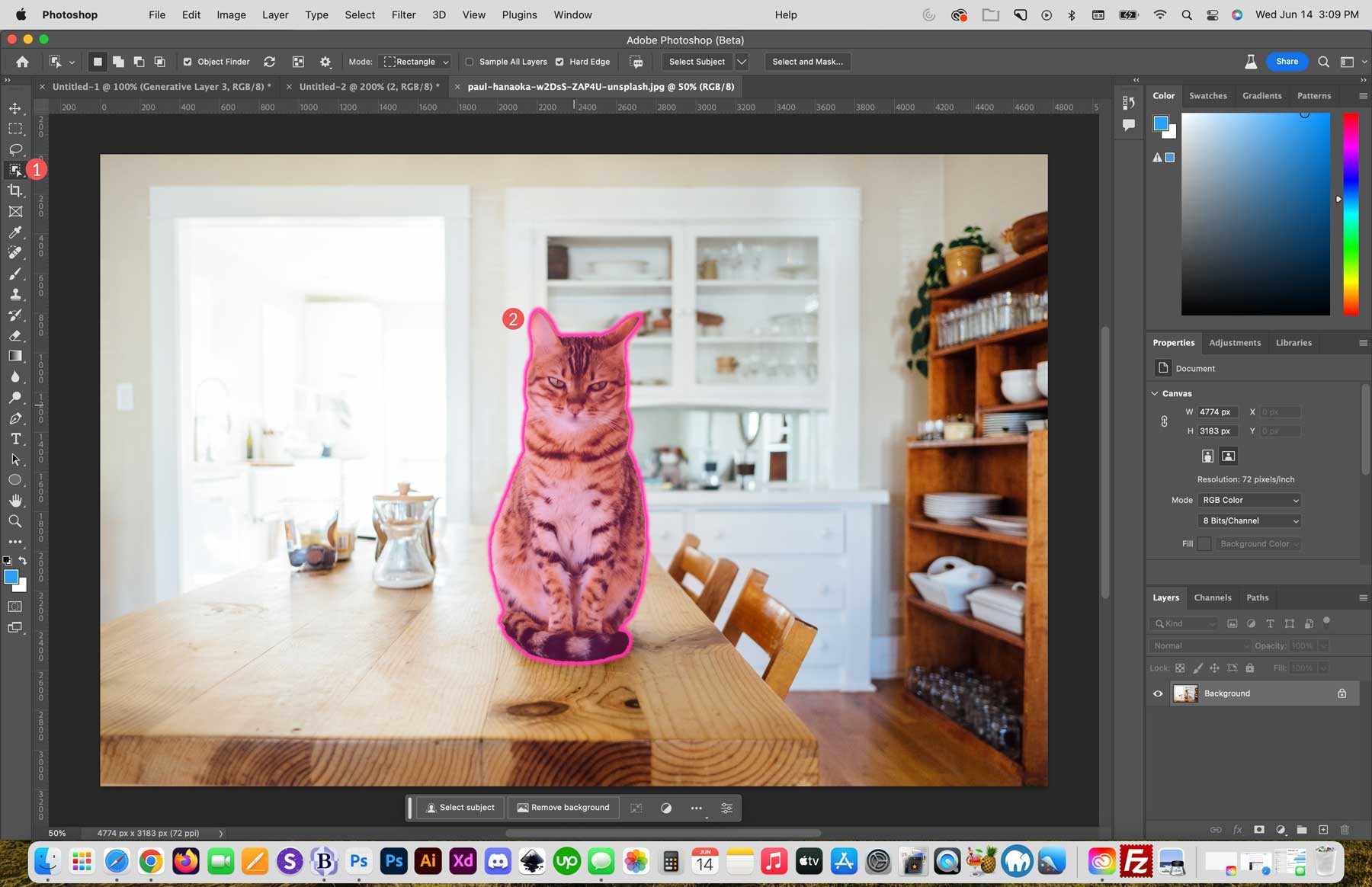
Use it to Blend Photos Together
Combining photos is another great way to use Photoshop AI’s generative fill feature. We’ll show you an example with two video game character images created in Midjourney. We’ll start by creating a blank canvas measuring 1800px by 1024px. Then, we’ll import the first image into your canvas by clicking the import button on the contextual taskbar.
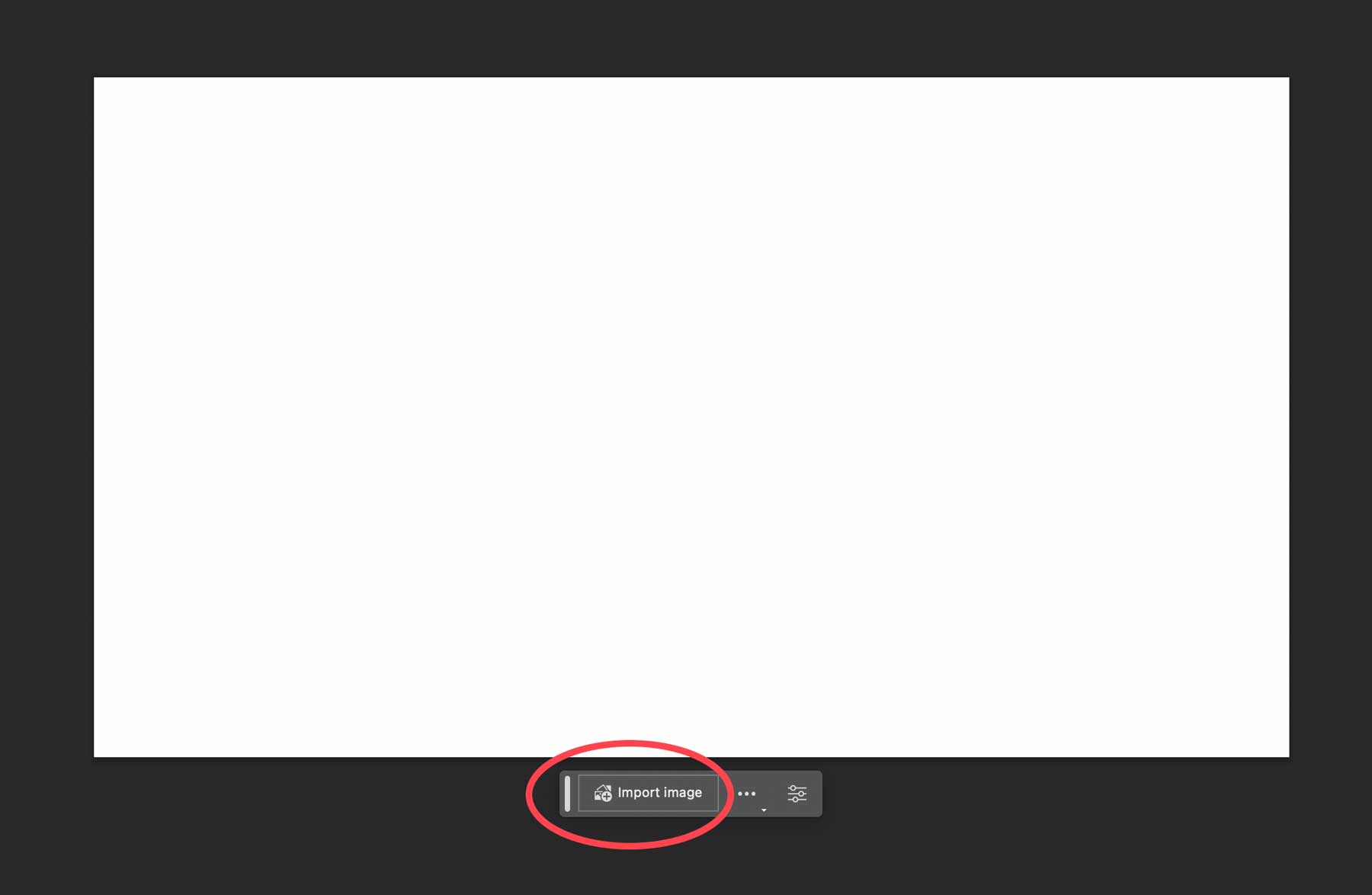
Next, we’ll use the crop tool to extend our canvas to provide more room for blending our images.
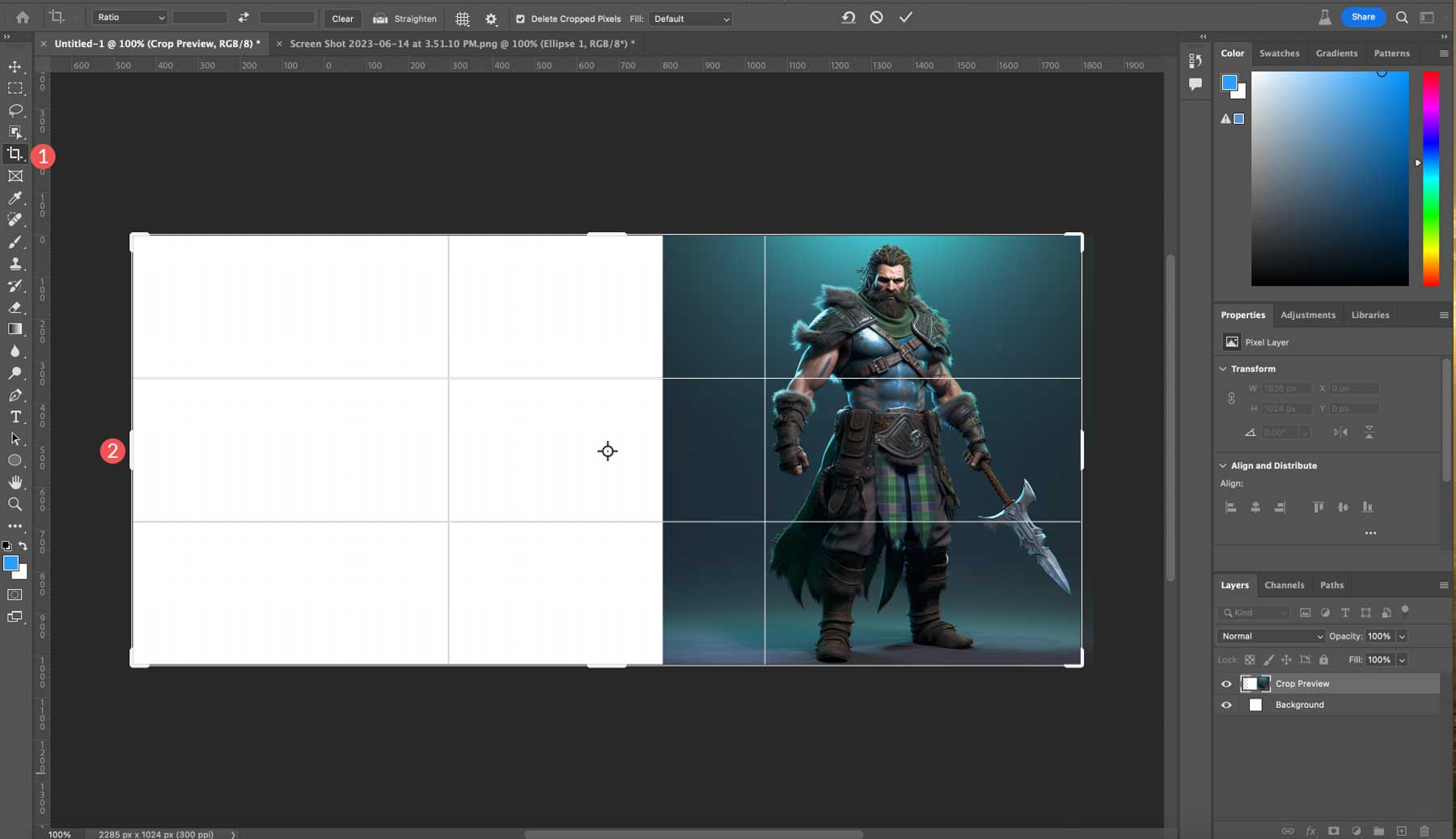
Then, we’ll import our other image and add it to the canvas on the left side.
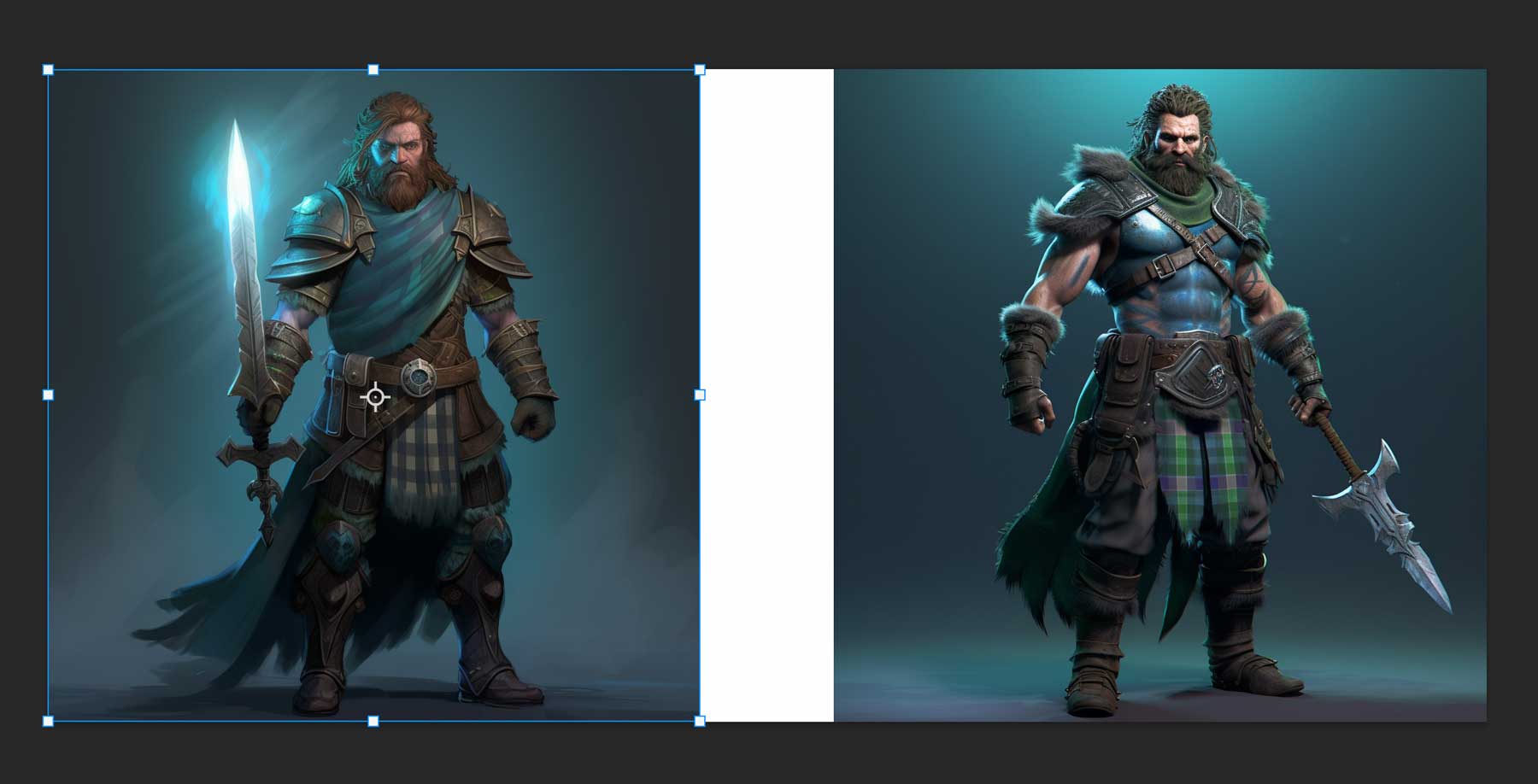
To blend the two photos, we must ensure both images are on the same layer. To do this, select the top layer, then hold Control + Shift + Alt + E (Windows) or Command + Shift + Alt + E (Mac) to tell Photoshop to create a new layer containing all other visible layers.
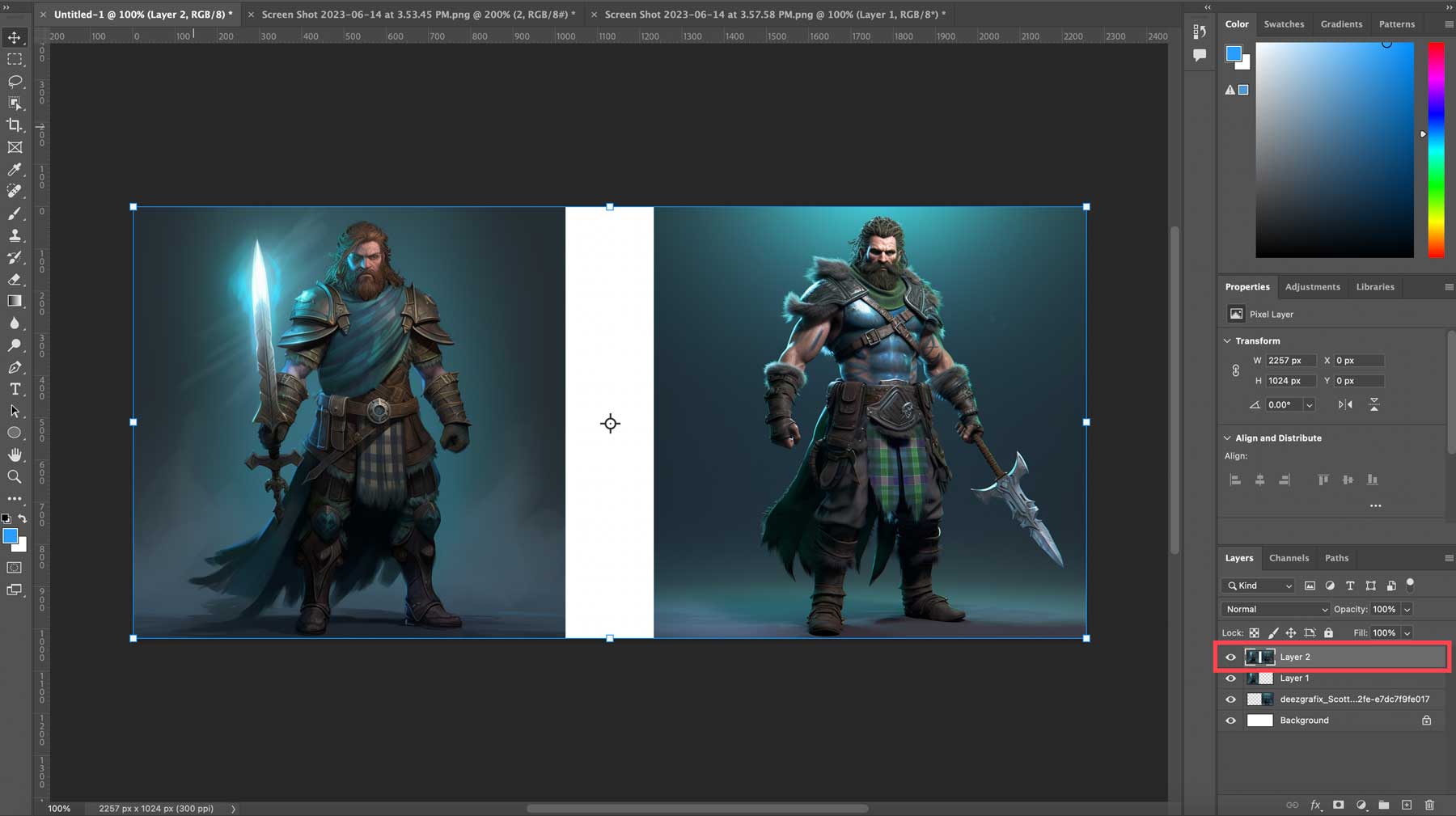
With the new layer selected, we’ll add a selection between the two photos, ensuring that pixels from both images are included in the selection. Finally, click generative fill, then generate without adding a text prompt. The result is a blended photo that took seconds to create.
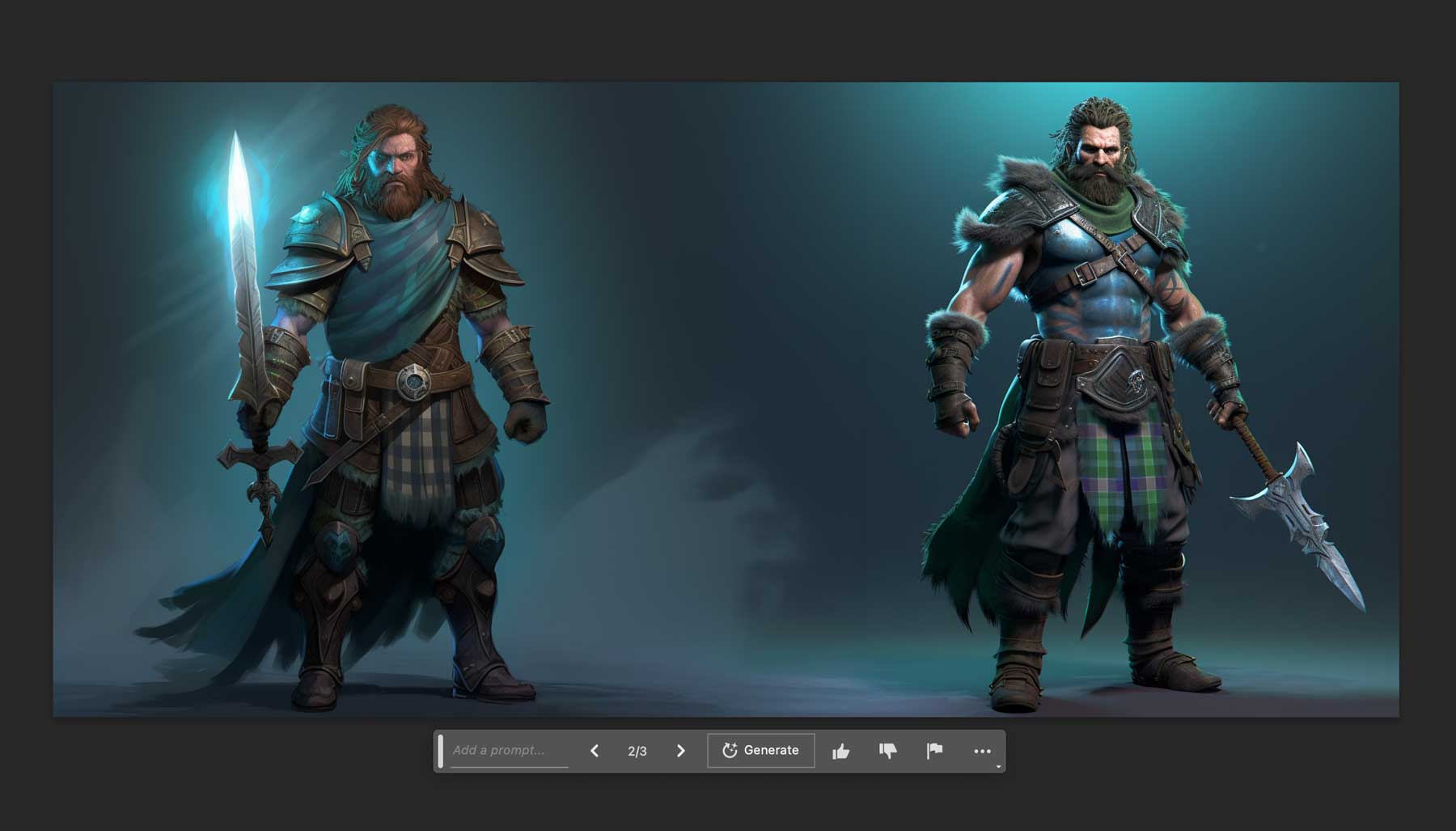
Before and After Examples Using Photoshop AI
We thought it might be fun to share a few of our creations as we researched this article, as it shows some of the things you can do with Photoshop’s AI generative fill tool. Its AI tools are impressive, whether you need to make small adjustments to an existing image or do a complete overhaul.
Before: An image of two people walking next to a body of water.
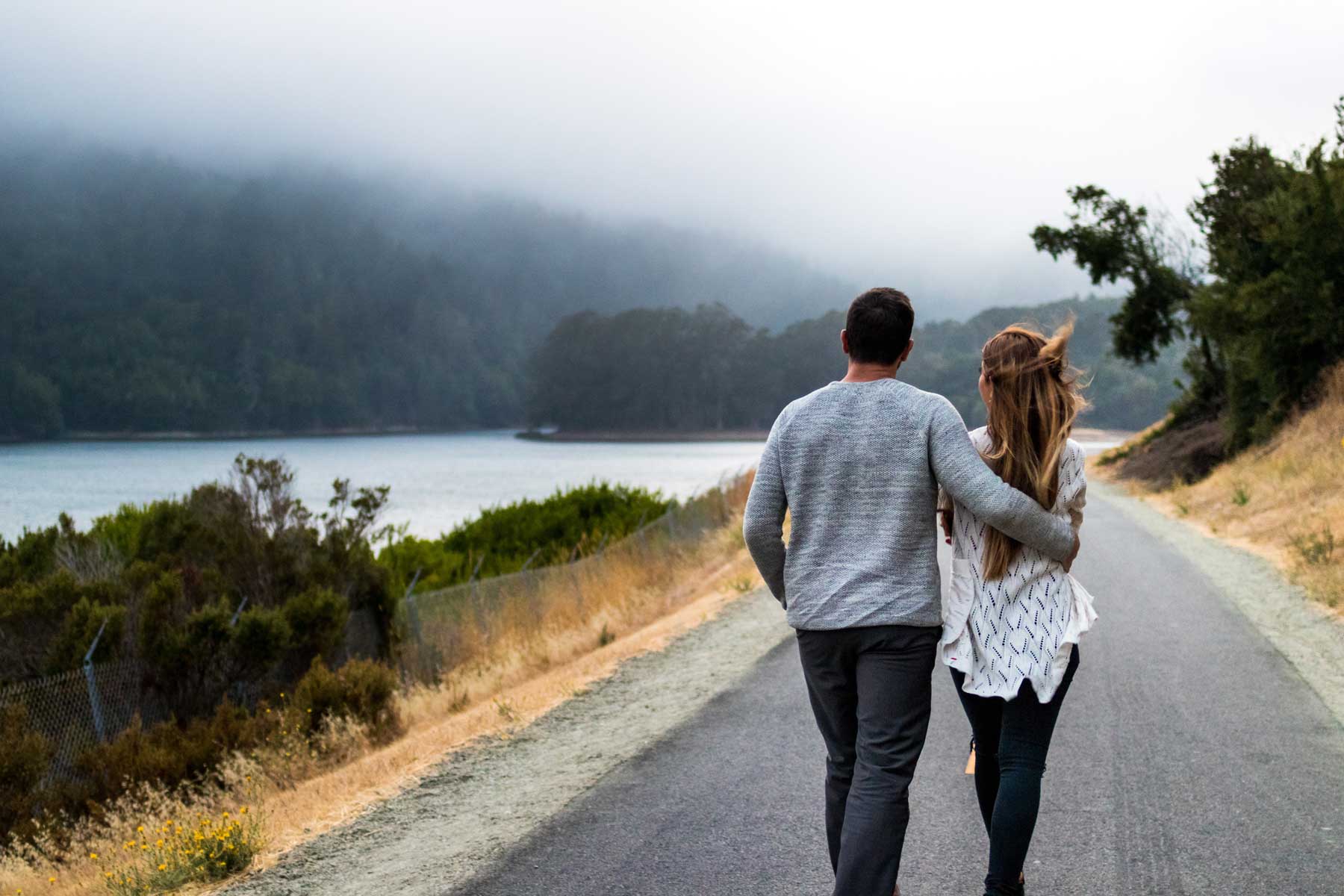
After: Those two people walk along a rocky beach.
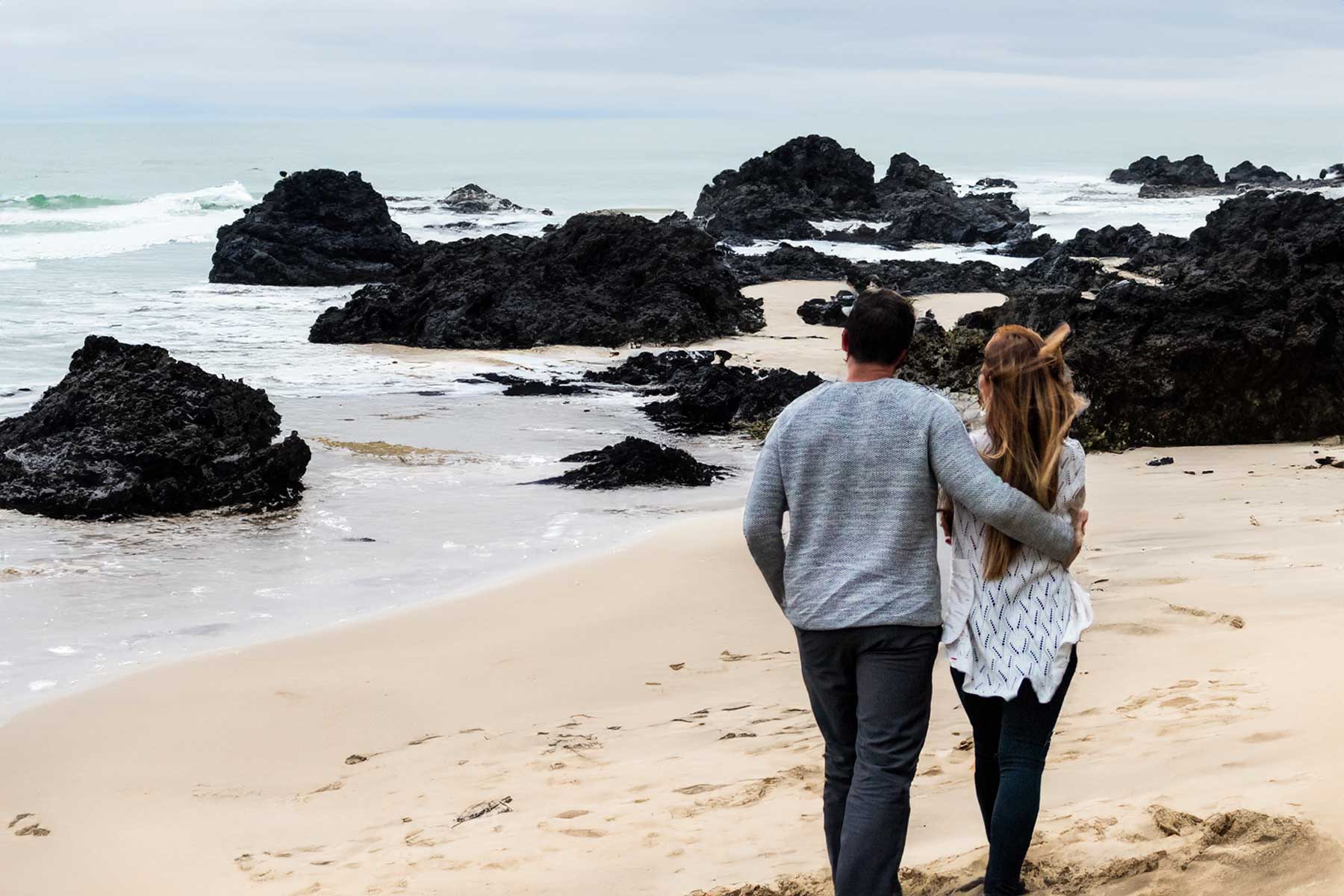
Before: Photo of a Jeep driving through a residential neighborhood.
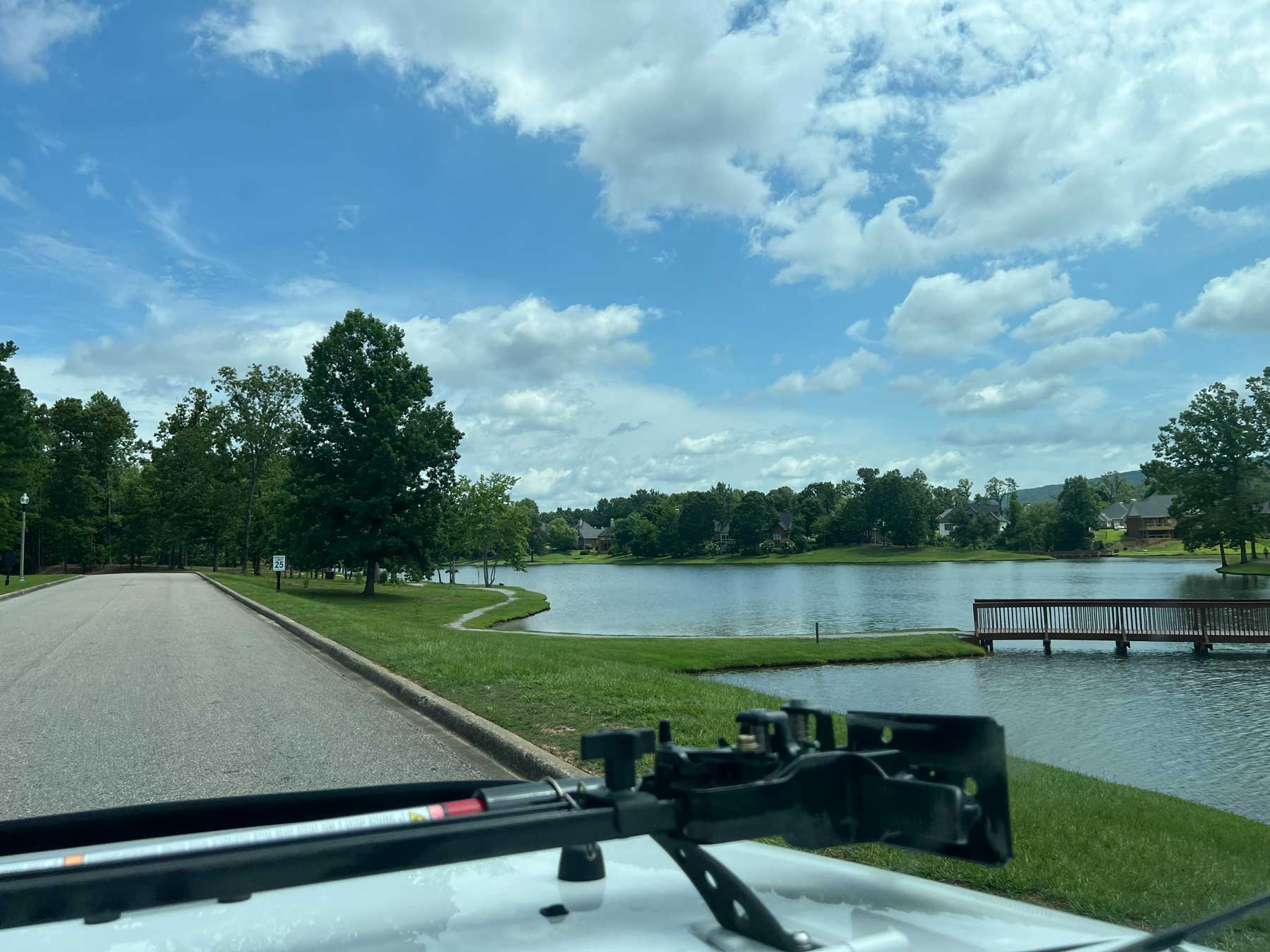
After: A much more fitting image of a Jeep in a mountainous lake scene, driving down a dirt road. Now we’re getting somewhere.

Before: Photo of a man wearing a suit.

After We used the lasso tool and selected a subject to change the man’s clothing, give him a different hair color, and add a pair of cool sunglasses.
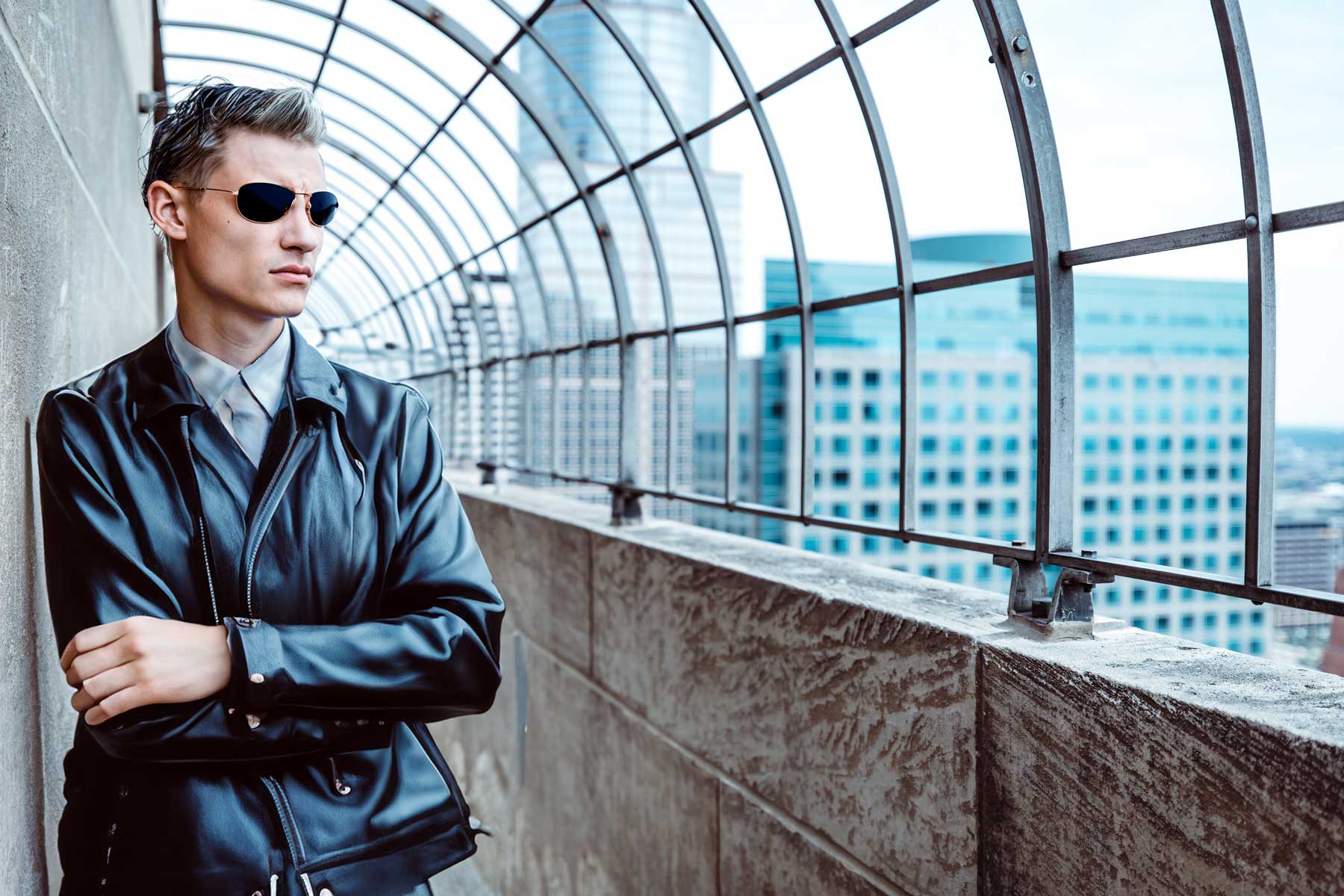
Before: A Jack Russell Terrier on a patio chair.

After: We extended the canvas to give the dog a full body. Next, we generated several elements to make it look like the dog was resting on a couch in front of a fire.
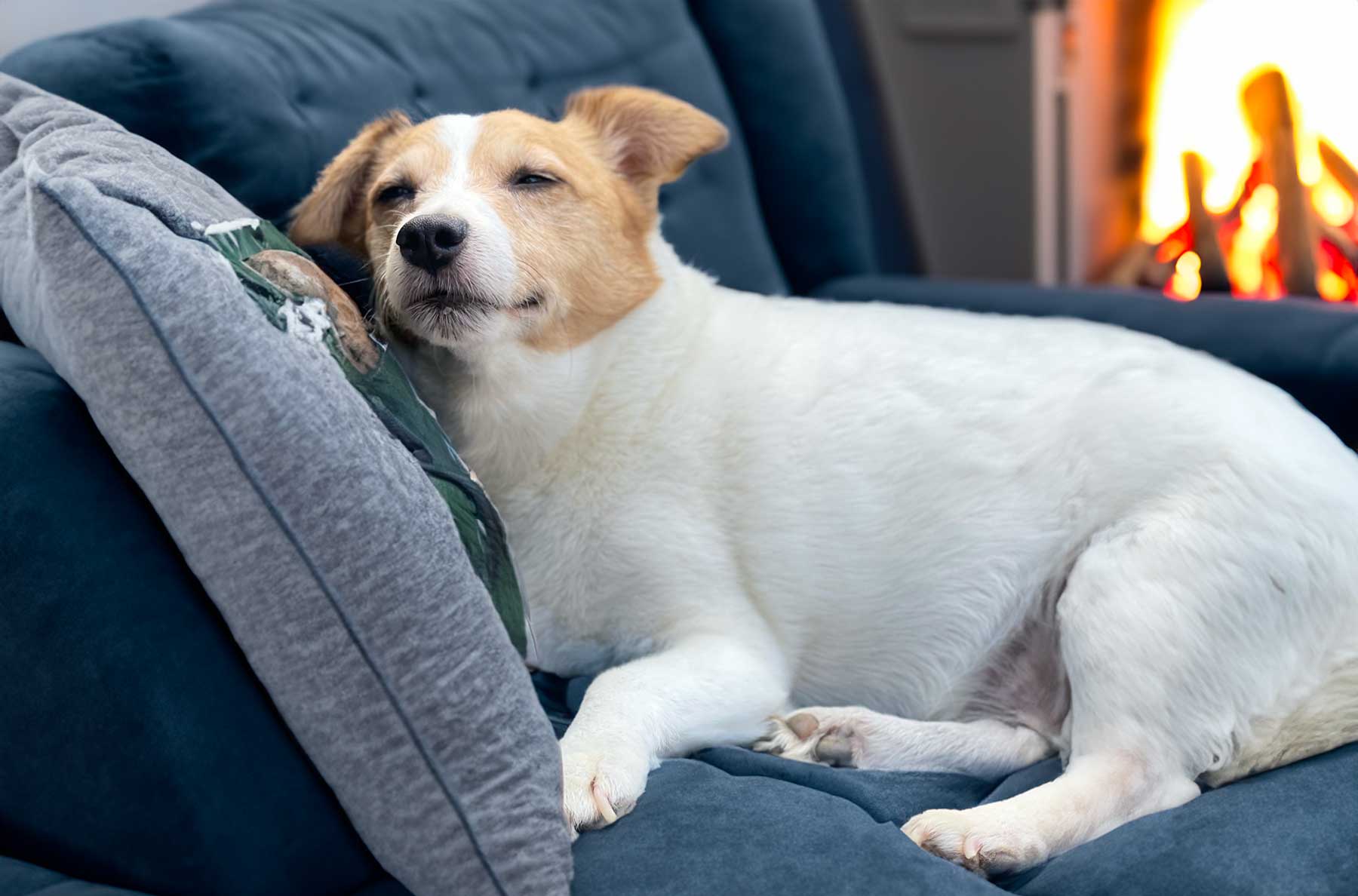
Photoshop AI Image Usage Rights
We could only end our article by mentioning the subject of generative fill and the usage rights of the photos it creates. Until recently, Adobe clarified that anything made with their AI programs is prohibited from commercial use. However, we’re pleased to report that you can now commercially use any images created with Photoshop’s Generative Fill. Adobe trained its generative AI model strictly on licensed Adobe Stock images, so there’s no need to worry about copyright infringement. This is a huge step for AI and gives Adobe a distinct advantage over other AI image generators.
Final Thoughts on Photoshop AI Generative Fill
Photoshop AI is an amazing tool. You can alter images in nearly any way you imagine using the impressive AI-powered generative fill. While it does a good job of adding elements and removing backgrounds, it still has a long way to go. There are limitations, such as a maximum image size of 1024px, the lack of commercial image usage, and the need for better results for faces, hands, and animals. Undoubtedly, Adobe will continue to make improvements as the technology evolves.
Want to learn more about AI? Check out some of our amazing tutorials to help you become an AI art superstar:
- How to Generate Beautiful AI Images with Stable Diffusion
- How to Use AI to Create Amazing Web Design with Divi (Using ChatGPT & MidJourney)
Frequently Asked Questions (FAQs)
Before we wrap up, let’s answer some of your most common questions about Adobe’s generative fill feature. Did we miss one? Leave a question below, and we will respond!
What is Photoshop AI Generative Fill?
Is Photoshop AI free?
How can I use Photoshop AI Generative Fill?
How can I use AI in Photoshop?
What is Adobe Firefly?
What version of Photoshop has AI?
What are the best Photoshop AI tools?
How much does Photoshop AI cost?
What is the best Photoshop AI feature?
How can I download Photoshop AI?
Featured Image via roilir / Shutterstock.com

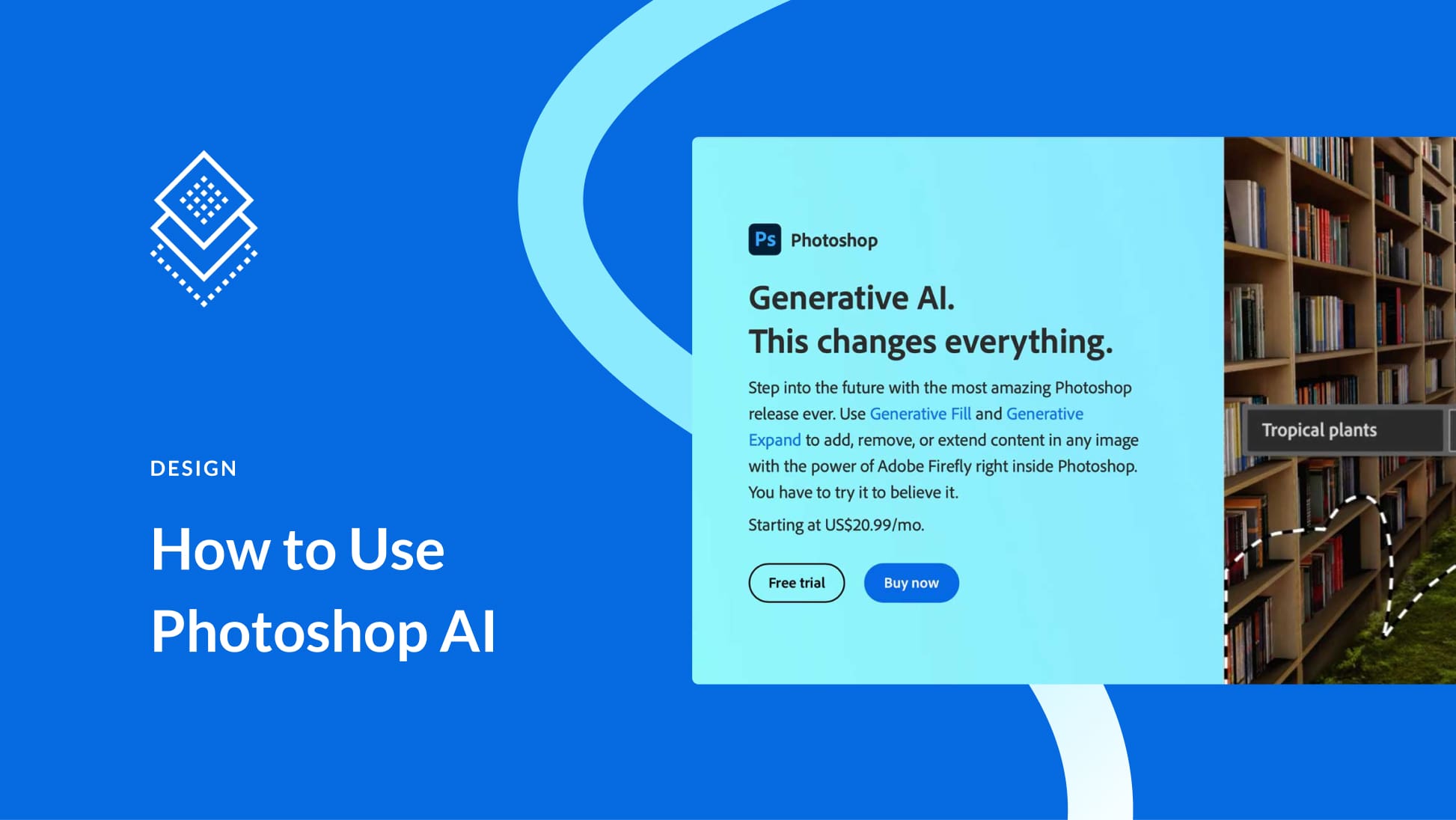
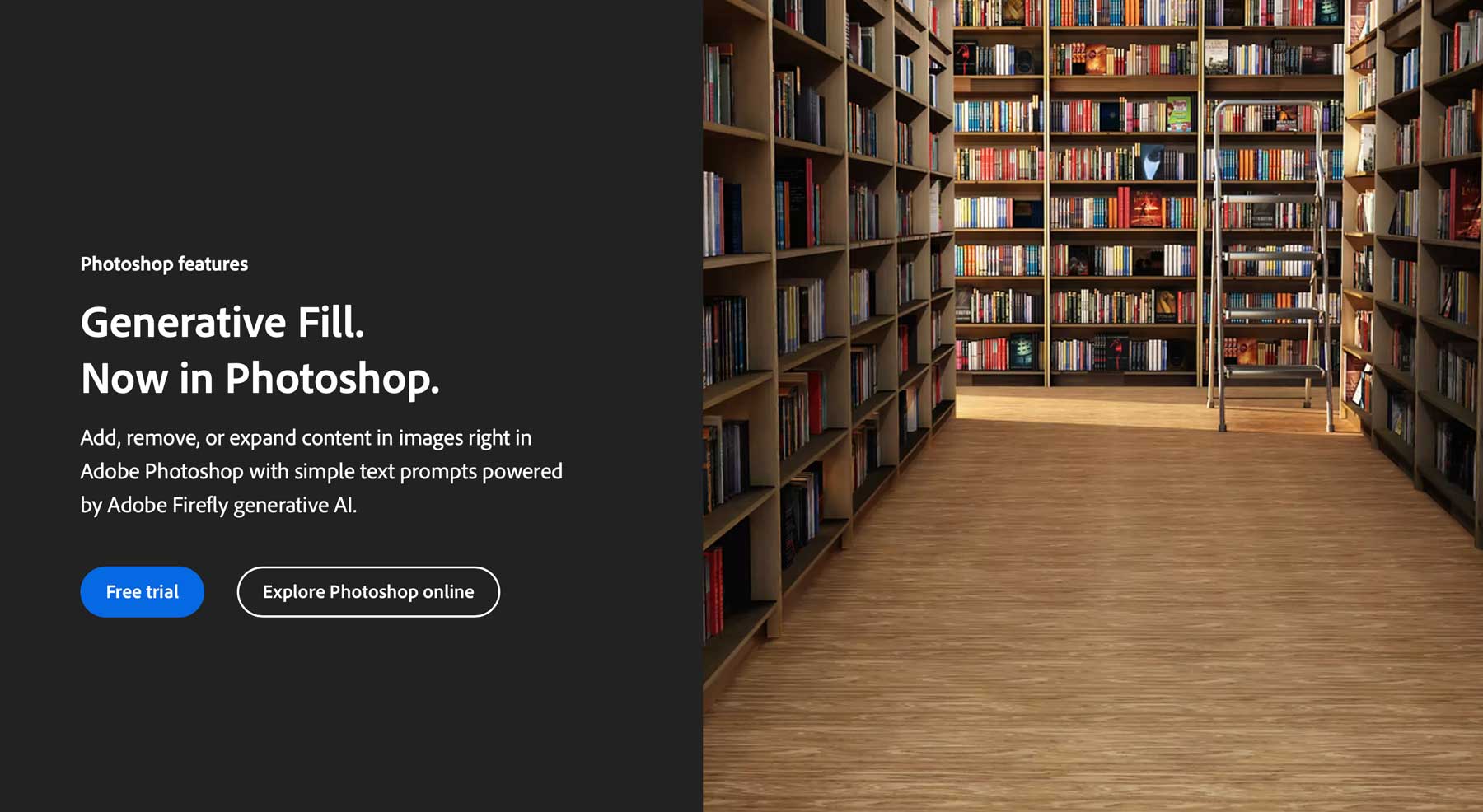



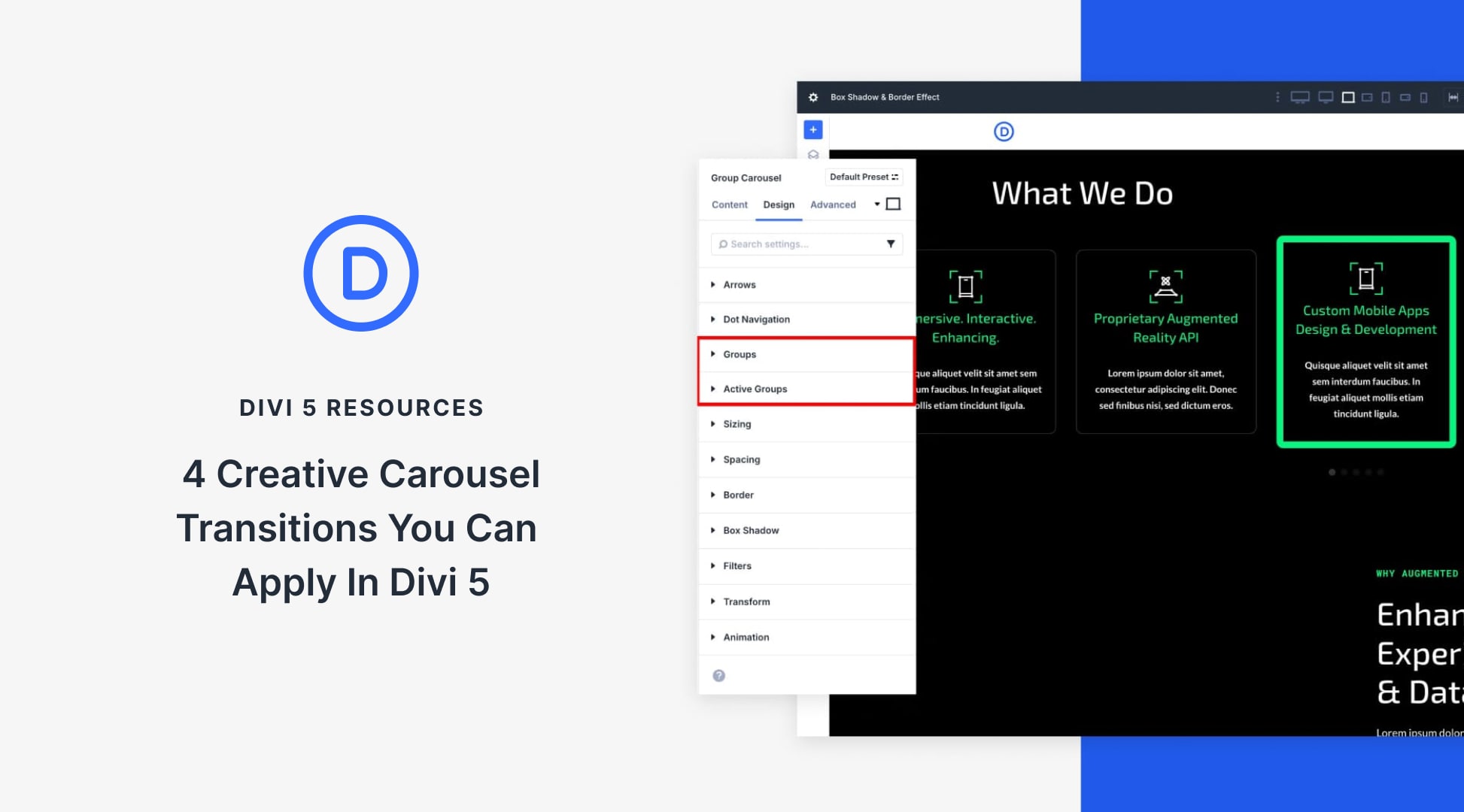
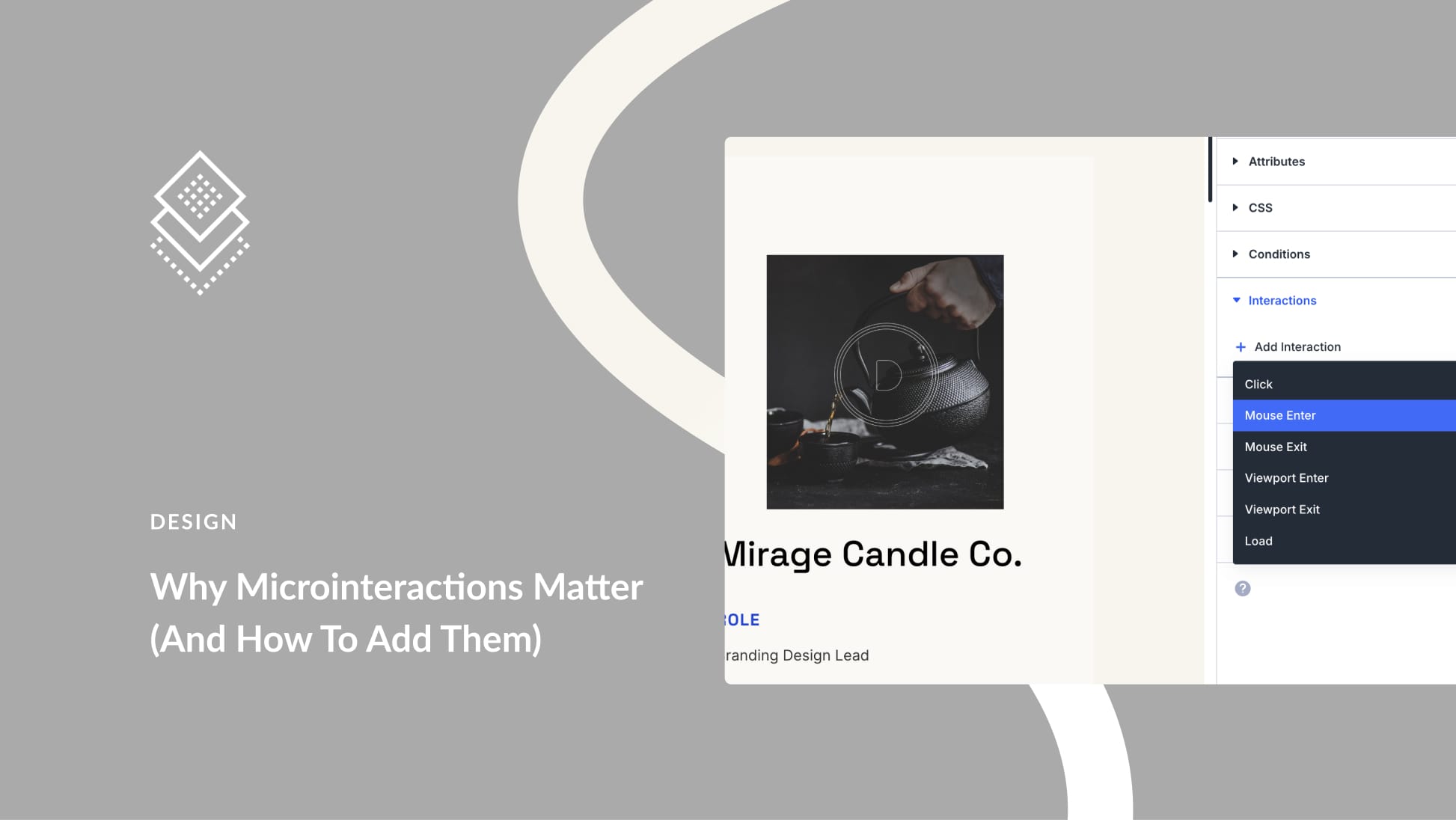
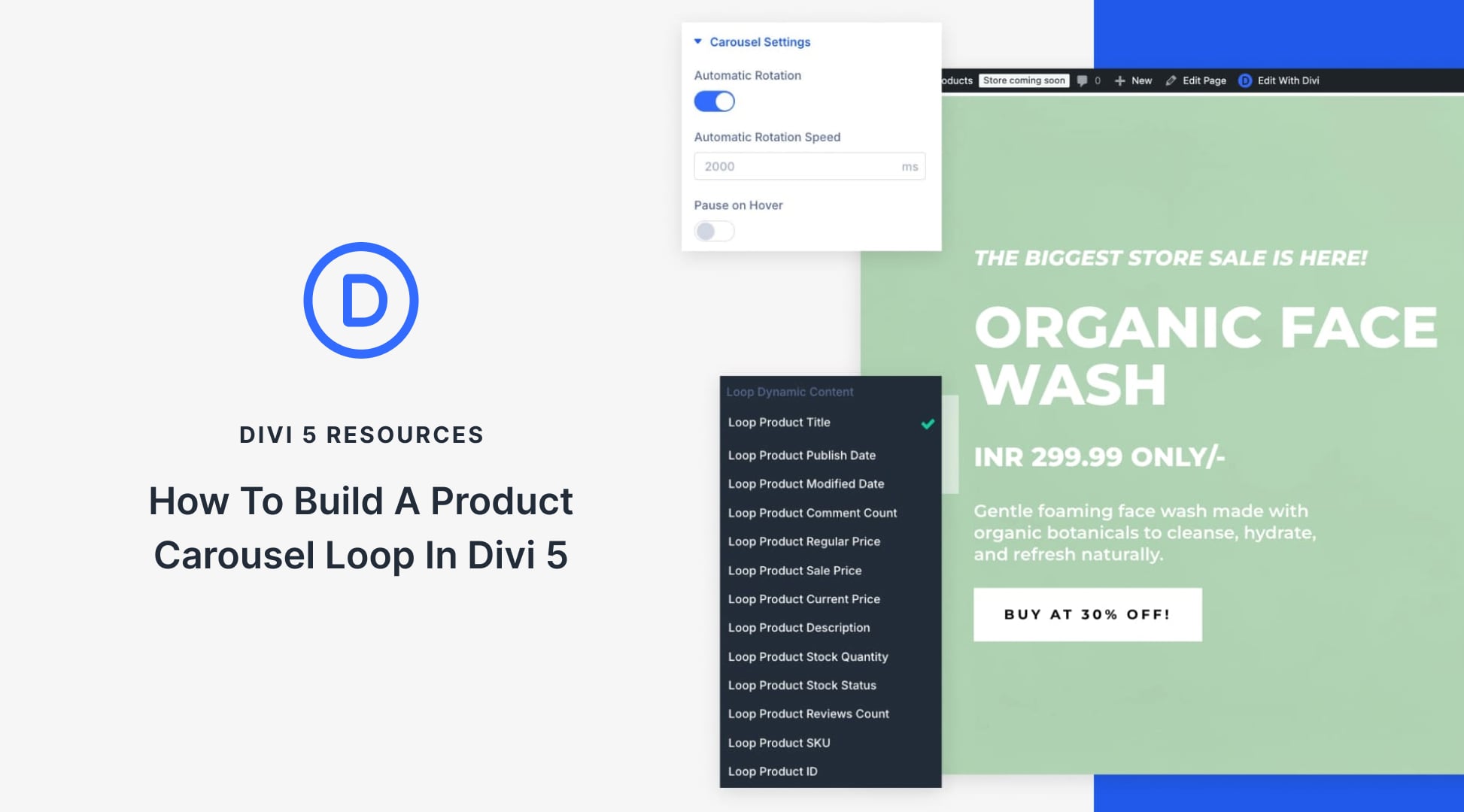
Can we use the images generated with Photoshop Beta or Adobe firefly in our clients projects of we have Adobe creative cloud subscription?
The first step is wrong. You need to go to Photoshop Beta, which is in the “Beta Apps” section of Adobe Creative Cloud. Photoshop Beta is the only one currently that has the generate option. You can have both Photoshop and Photoshop Beta on your computer at the same time.
The first step is wrong. You need to go to Photoshop Beta, which is in the “Beta Apps” section of Adobe Creative Cloud. Photoshop Beta is the only one currently that has the generate option. You can have both Photoshop and Photoshop Beta on your computer at the same time.
Hi Paul. Adobe’s AI tools came out of beta last week and the post was updated to reflect this change. You no longer need to use the beta version of Photoshop to access Generative Fill.